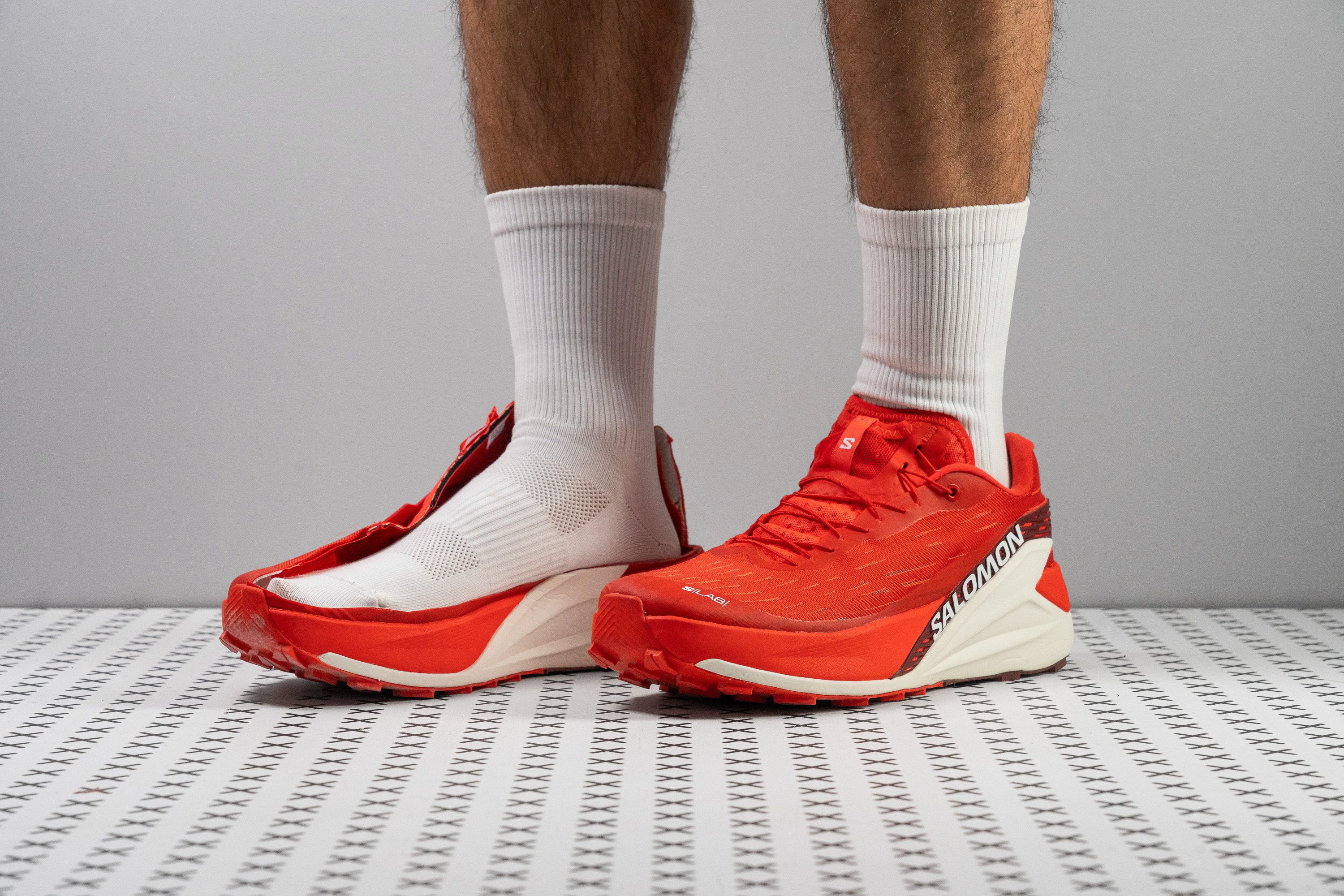Nuestra conclusión
Pros
- Absorción de impactos mejorada
- El Active Chassis ofrece más estabilidad
- Ajuste más ancho que el de la mayoría de las S/Lab
- Parte delantera con un alto volumen vertical
- Suela exterior Contagrip de confianza
- Cierre seguro
- Sistema Quicklace rápido
- Upper MATRYX de calidad premium
- Destacan en rutas fáciles
Contras
- Retorno de energía decepcionante
- Poco transpirables
- Caras para su rendimiento
- Pierden agarre en césped o barro
Veredicto de los usuarios
Comparativa
Las zapatillas de running más parecidas
+ + Añadir unas zapatillas | |||||
|---|---|---|---|---|---|
| Puntuación global | 77 Aceptables | 87 Notables | 93 Excelentes | 86 Buenas | |
| Precio | 220 € | 150 € | 190 € | 150 € | |
| Terreno de trail | Sencillo | Sencillo | Sencillo | SencilloModerado | |
| Arch support | Neutral | Neutral | Neutral | Neutral | |
| Peso laboratorio Peso marca | 8.7 oz / 247g 8.8 oz / 250g | 9.9 oz / 281g 9.9 oz / 280g | 7.5 oz / 214g 7.1 oz / 200g | 10.1 oz / 286g 9.2 oz / 260g | |
| Lightweight | ✓ | ✗ | ✓ | ✗ | |
| Drop laboratorio Drop marca | 7.1 mm 6.0 mm | 7.2 mm 6.0 mm | 8.6 mm 6.0 mm | 7.2 mm 6.0 mm | |
| Técnica de carrera | Medio/antepié | Medio/antepié | Medio/antepié | Medio/antepié | |
| Talla | - | Tallan bien | Tallan bien | Tallan bien | |
| Rigidez de la mediasuela | Blanda | Blanda | Equilibrada | Blanda | |
| Diferencia de la rigidez de la mediasuela en frío | Normal | Pequeña | Normal | Grande | |
| Placa | ✗ | Rock plate | ✗ | ✗ | |
| Durabilidad de la parte delantera | Decente | Decente | Decente | Mala | |
| Durabilidad del acolchado del talón | Alta | Alta | Media | - | |
| Durabilidad de la suela exterior | Buena | Buena | Decente | - | |
| Transpirabilidad | Baja | Media | Baja | Media | |
| Anchura / ajuste | Media | Media | Media | Estrecha | |
| Anchura de la parte delantera | Media | Media | Media | Estrecha | |
| Flexibilidad | Moderada | Rígida | Flexible | Moderada | |
| Rigidez torsional | Rígidas | Rígidas | Moderadas | Flexibles | |
| Rigidez del contrafuerte del talón | Moderado | Moderado | Flexible | Moderado | |
| Profundidad del dibujo de la suela | 3.0 mm | 2.5 mm | 3.0 mm | 2.8 mm | |
| Altura de la suela en la zona del talón laboratorio Altura de la suela en la zona del talón marca | 32.6 mm 31.0 mm | 31.0 mm 32.6 mm | 25.0 mm 23.5 mm | 30.6 mm 32.0 mm | |
| Antepié laboratorio Antepié marca | 25.5 mm 25.0 mm | 23.8 mm 26.6 mm | 16.4 mm 17.5 mm | 23.4 mm 26.0 mm | |
| Anchuras disponibles | Estándar | Estándar | Estándar | Estándar | |
| Estación | Todas las estaciones | Todas las estaciones | Todas las estaciones | Todas las estaciones | |
| Removable insole | ✗ | ✓ | ✗ | ✗ | |
| Orthotic friendly | ✗ | ✓ | ✗ | ✗ | |
| Clasificación | #335 9% inferior | #152 Top 42% | #4 Top 2% | #176 Top 48% | |
| Popularidad | #362 2% inferior | #285 22% inferior | #235 36% inferior | #182 Top 50% |
Who should buy
After testing, we recommend the Salomon S/Lab Pulsar 4 for:
- Runners who enjoyed previous Pulsars but wished for extra cushioning to tackle longer mountain adventures.
- Those looking for a trail shoe that blends impressive stability with a compact, agile design.
- Athletes seeking a racing-ready model without a carbon plate, offering a more natural feel than most trail supershoes.
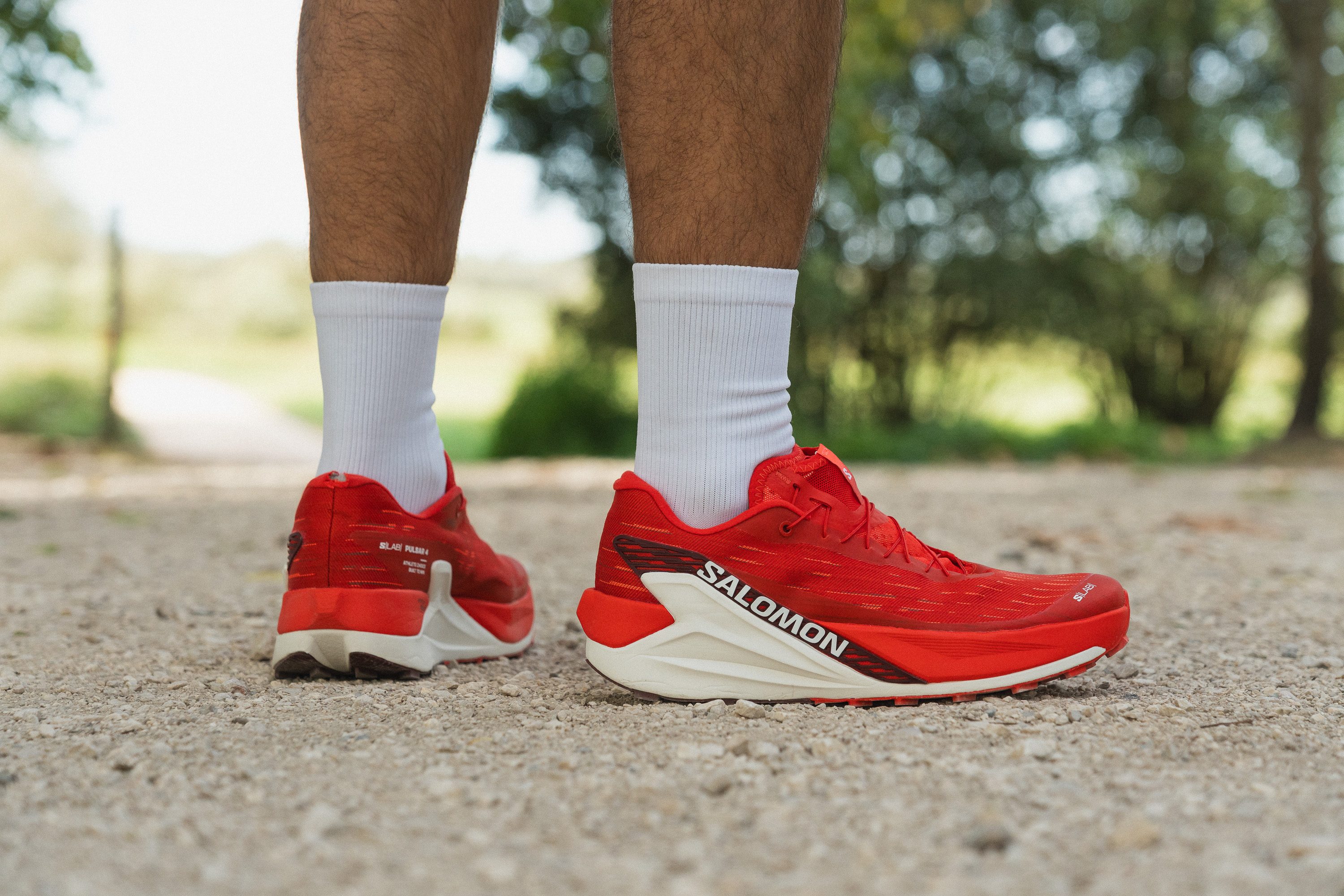
Who should NOT buy
We believe the Salomon S/Lab Pulsar 4 isn’t the best choice for runners chasing peak performance. In our lab tests, we found its energy return surprisingly low for such an expensive, competition-focused model. For those seeking real bounce, we suggest checking the Nike Ultrafly or HOKA Tecton X 3, both of which deliver a faster ride.
We also think that long-time Pulsar fans may feel disappointed by the added weight. Yes, it’s still light, but it has lost the spark that defined earlier versions. In our experience, runners wanting an ultra-lightweight trail shoe will find better value in the HOKA Zinal 2.
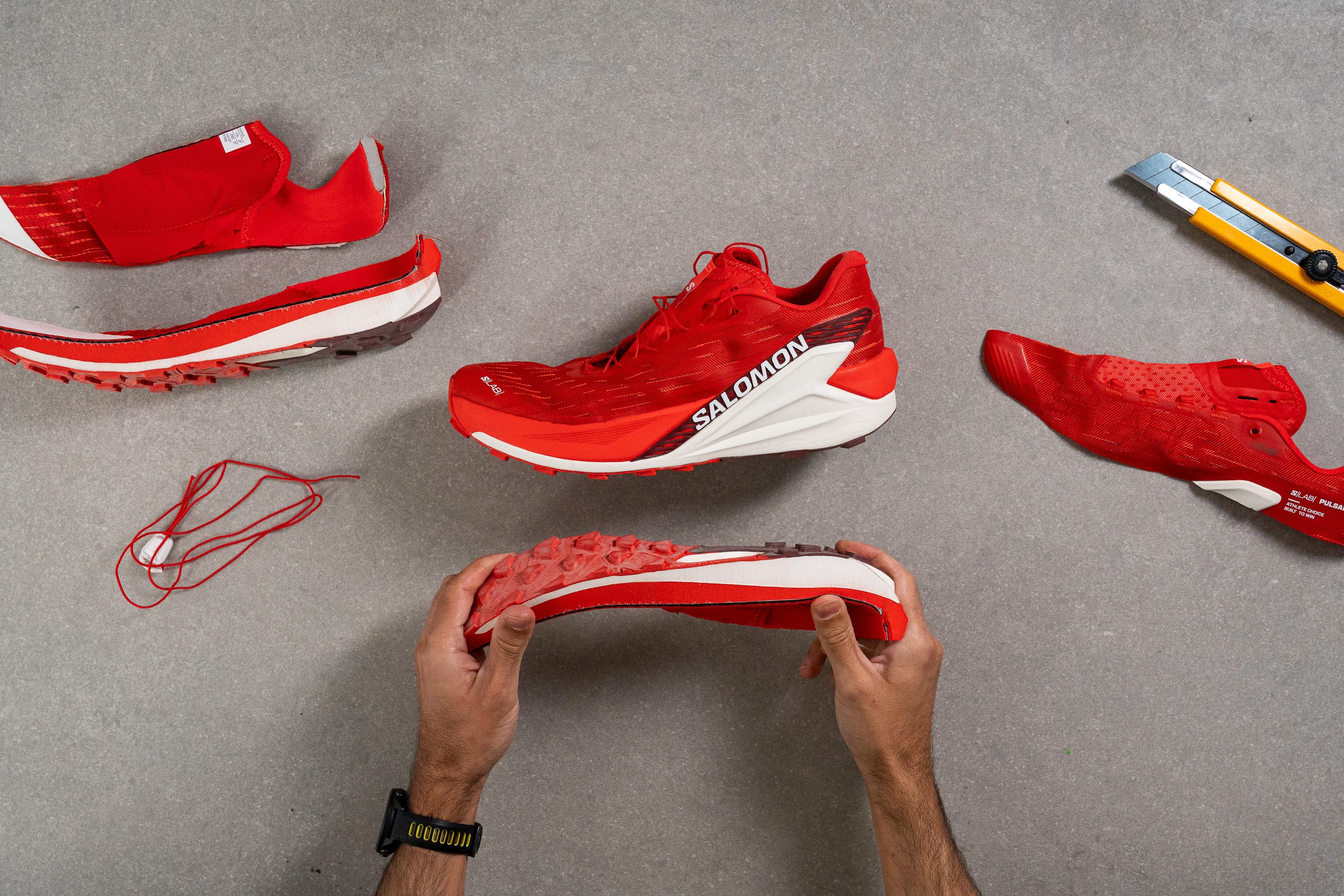
Amortiguación
Shock absorption
One of the best parts of lab testing shoes is getting real data that helps runners make informed decisions—and here’s a big one. Fans of the Pulsar line have always valued its ground-connected feel, moderate stack height, and low shock absorption. That setup wasn’t for everyone, but those who loved a feedback-rich ride swore by it.
The Pulsar 4, however, changes that formula completely. With significantly more foam underfoot, it surpassed our lab average for shock absorption—133 SA in the heel and 112 SA in the forefoot—making it less appealing to those who loved the earlier models.
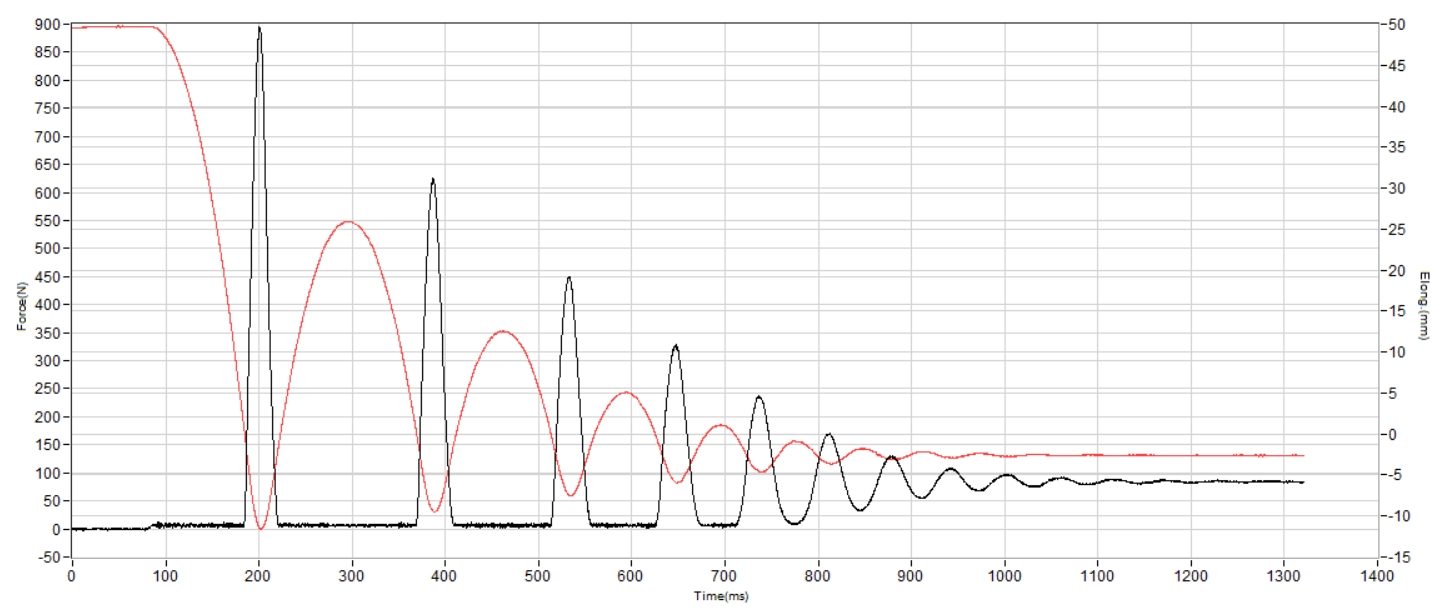
| S/Lab Pulsar 4 | 133 SA |
| Media | 122 SA |
Energy return
We discovered that the Pulsar 4 didn’t deliver the energy return we expect from a racing shoe. The foam showed a very disappointing 47.7% rebound in the heel and a slightly better 57.6% in the forefoot.
These results expose a performance-limiting midsole that simply doesn’t match its premium price.
| S/Lab Pulsar 4 | 47.7% |
| Media | 55.6% |
Altura de la suela en la zona del talón
The Pulsar 4 isn’t a max-stack shoe, but with 32.6 mm in the heel, it clearly packs more foam than ever before. This makes it more appealing to a wider range of runners, especially those seeking extra cushioning.
For us, it seems Salomon aimed to attract a broader audience rather than sticking to the niche crowd of previous Pulsars. However, as we mentioned earlier, this change could disappoint loyal fans while not necessarily winning over many new ones...
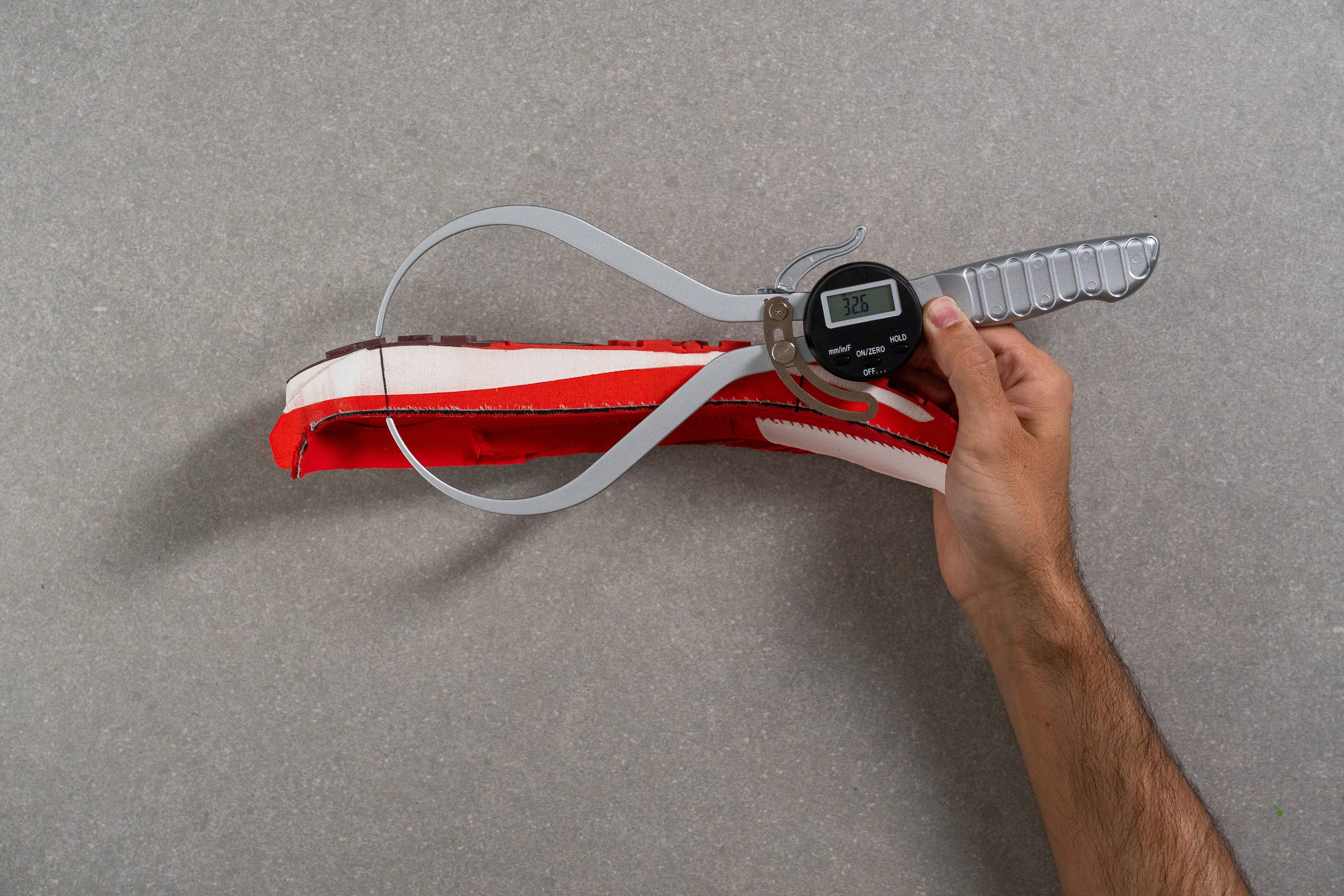
| S/Lab Pulsar 4 | 32.6 mm |
| Media | 32.6 mm |
Altura de la suela en el antepié
We measured 25.5 mm of stack height in the forefoot, which places it right around today’s average. However, with the ongoing trend toward ever-thicker midsoles, this number will likely seem below average in just a few years.
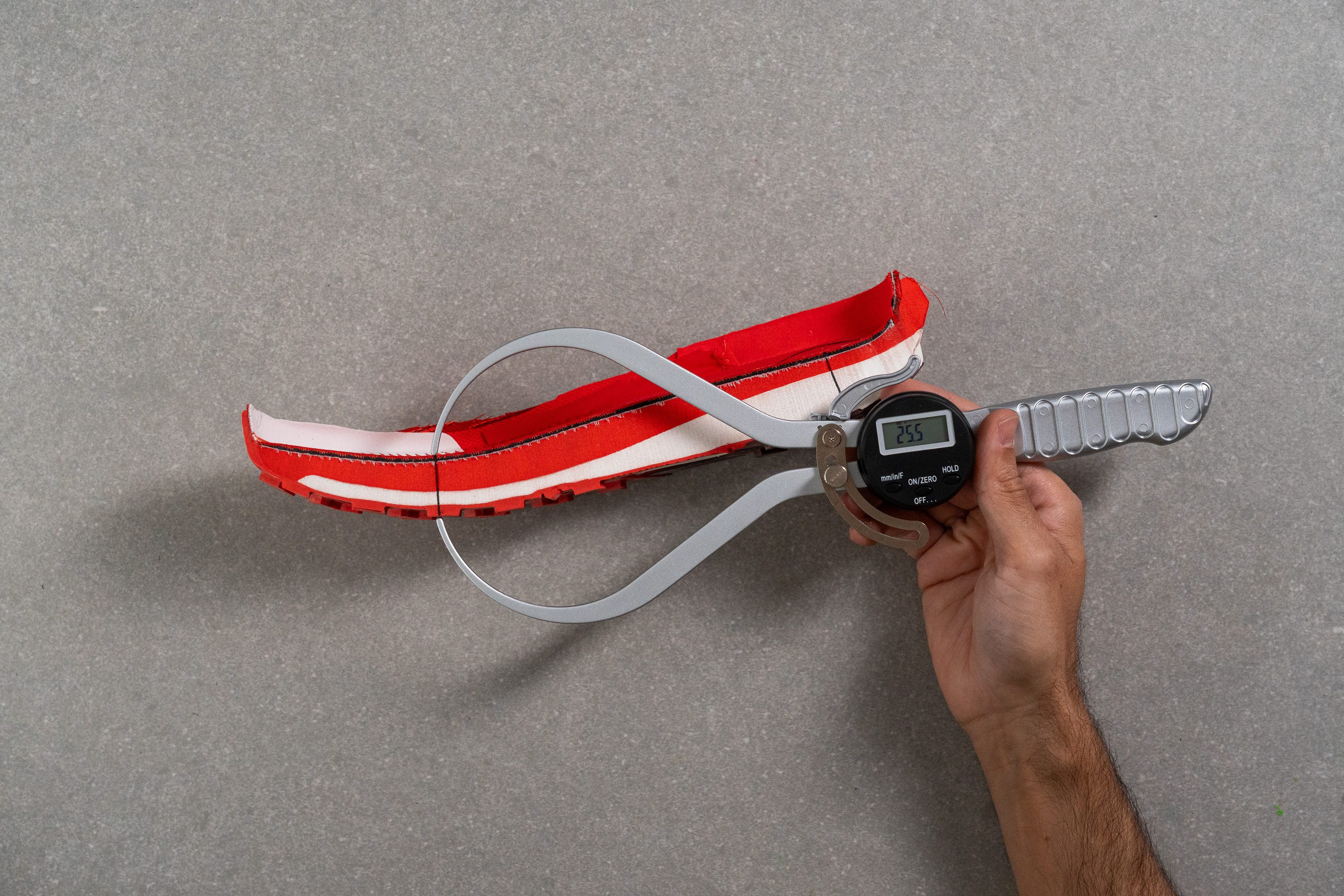
| S/Lab Pulsar 4 | 25.5 mm |
| Media | 25.1 mm |
Drop
Another major shift from Salomon here. The Pulsar series has always featured a 4 mm drop, but this time it officially moves to 6 mm, and our lab measurements confirmed an even steeper 7.1 mm.
While this adjustment benefits heel strikers, it noticeably changes the ride compared to earlier versions, so runners expecting the same feel as before should approach with caution.
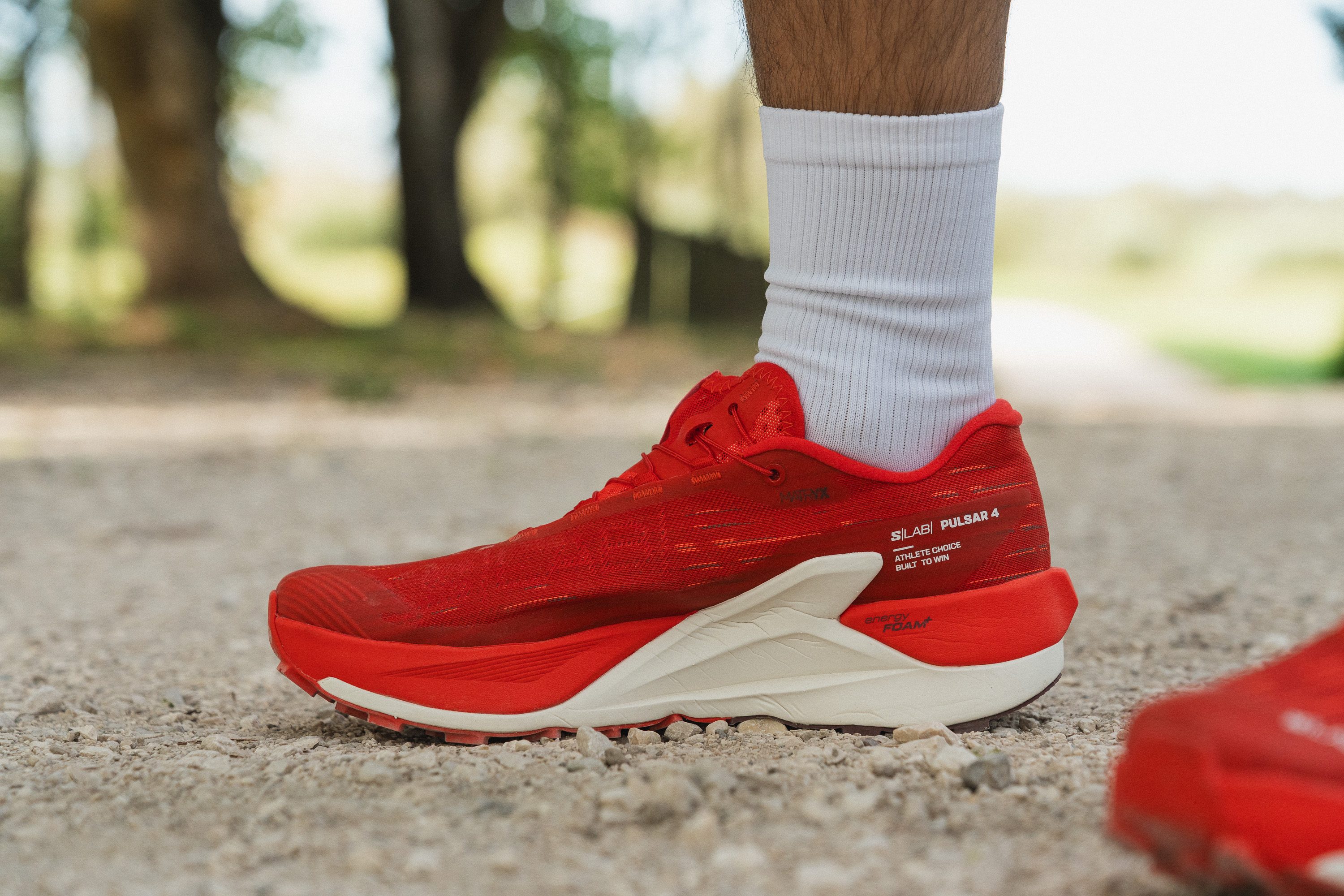
| S/Lab Pulsar 4 | 7.1 mm |
| Media | 7.6 mm |
Suavidad de la mediasuela
Salomon designed this shoe with two distinct foam compounds and no carbon plate—a bold choice for a modern competition model.
The first one, Energy Foam, is widely used across Salomon’s lineup and feels moderately soft underfoot at 17.5 HA. However, our lab testing confirmed its limited energy return before, and frankly, for a shoe at this price point, we believe it deserves something far more advanced than a cheap EVA foam.
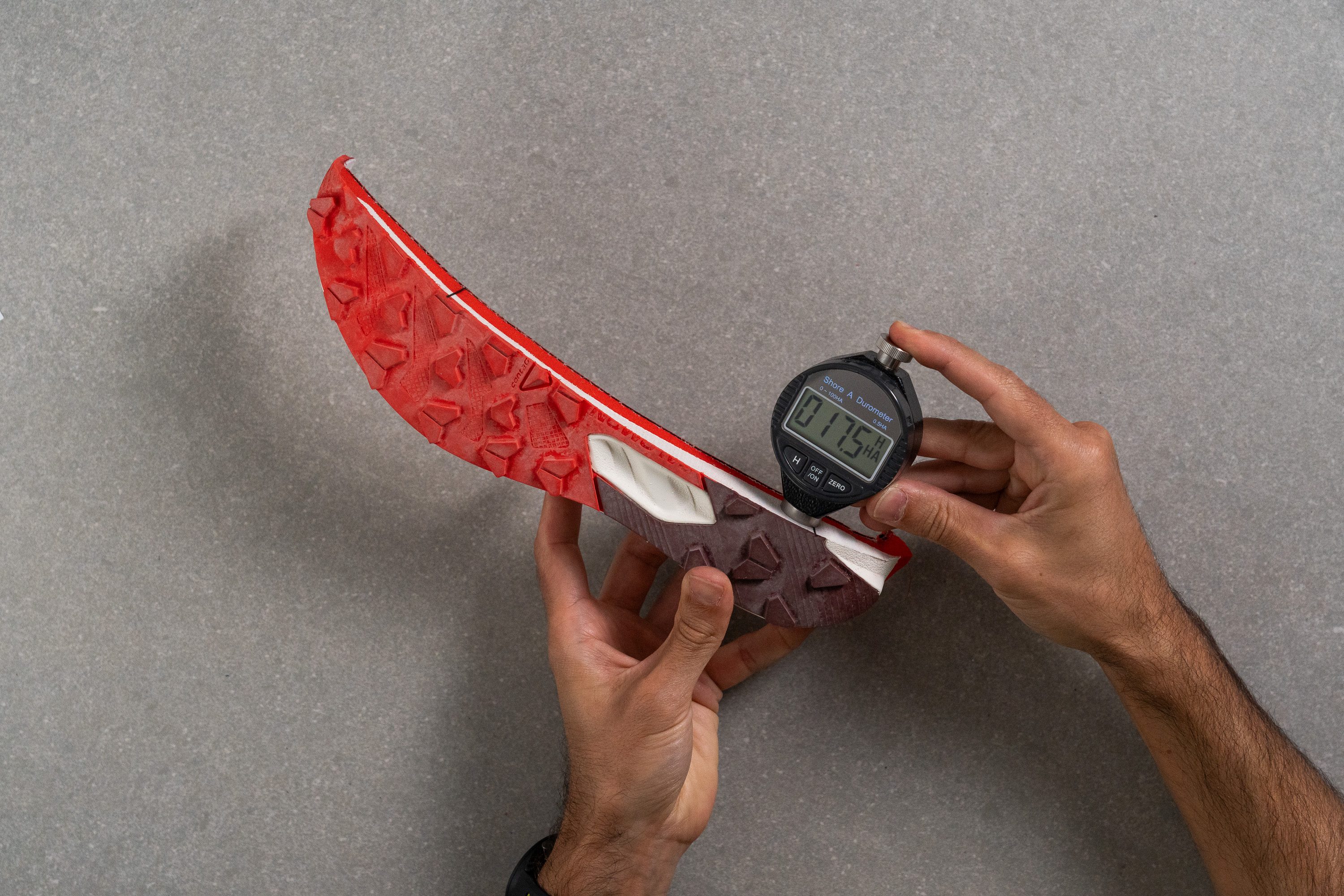
| S/Lab Pulsar 4 | 17.5 HA |
| Media | 21.9 HA |
Suavidad de la espuma secundaria
The secondary foam is an improvement, though still far from outstanding. Called Energy Foam+, it sits closer to the foot, has an even softer formulation (15.0 HA) and combines PEBA with EVA to create a more responsive feel.
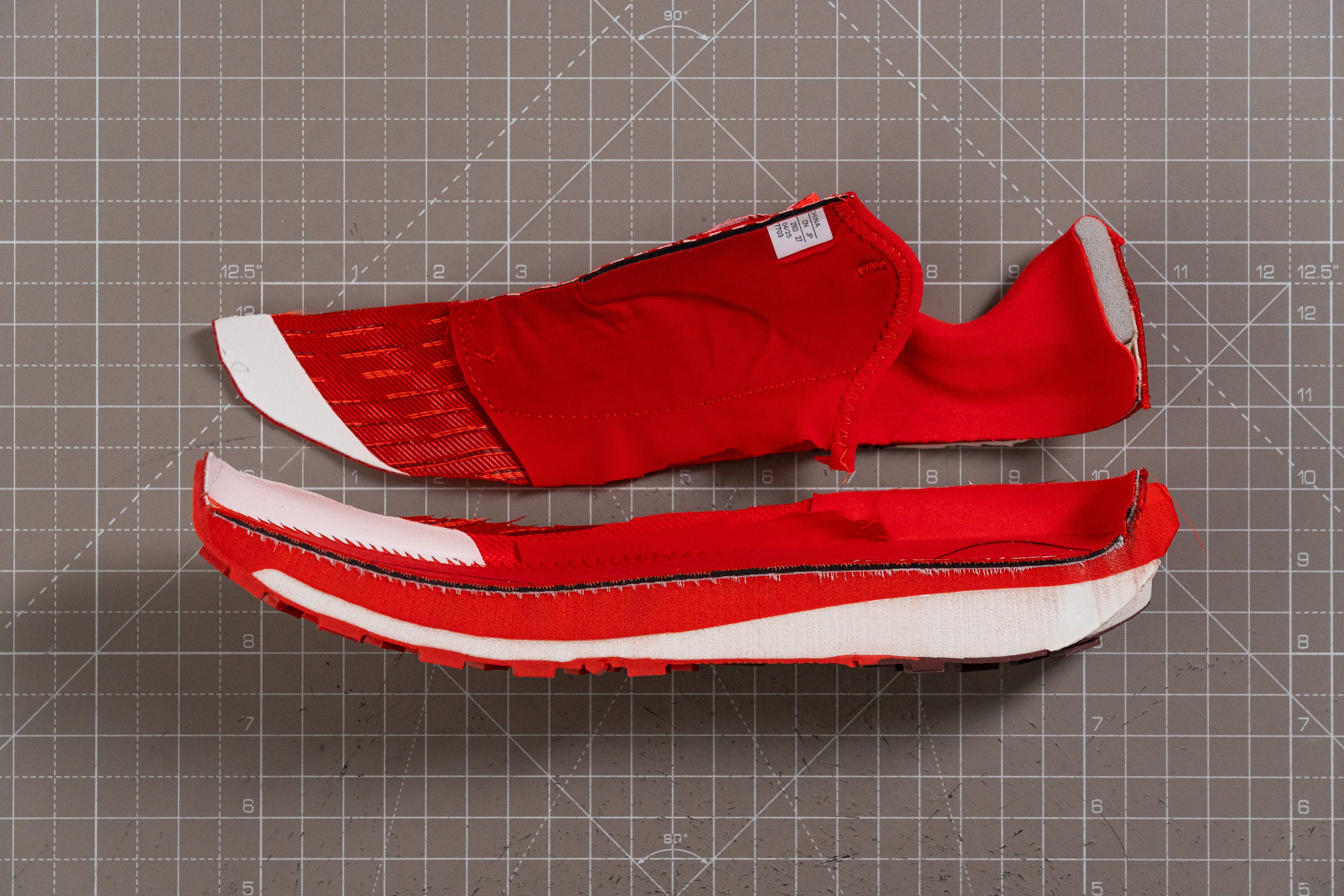
It’s also more prominent in the forefoot than the heel—as seen in the photo above, with red representing Energy Foam+ and white for Energy Foam—which explains the lower energy return in the rear and the slightly better performance up front.
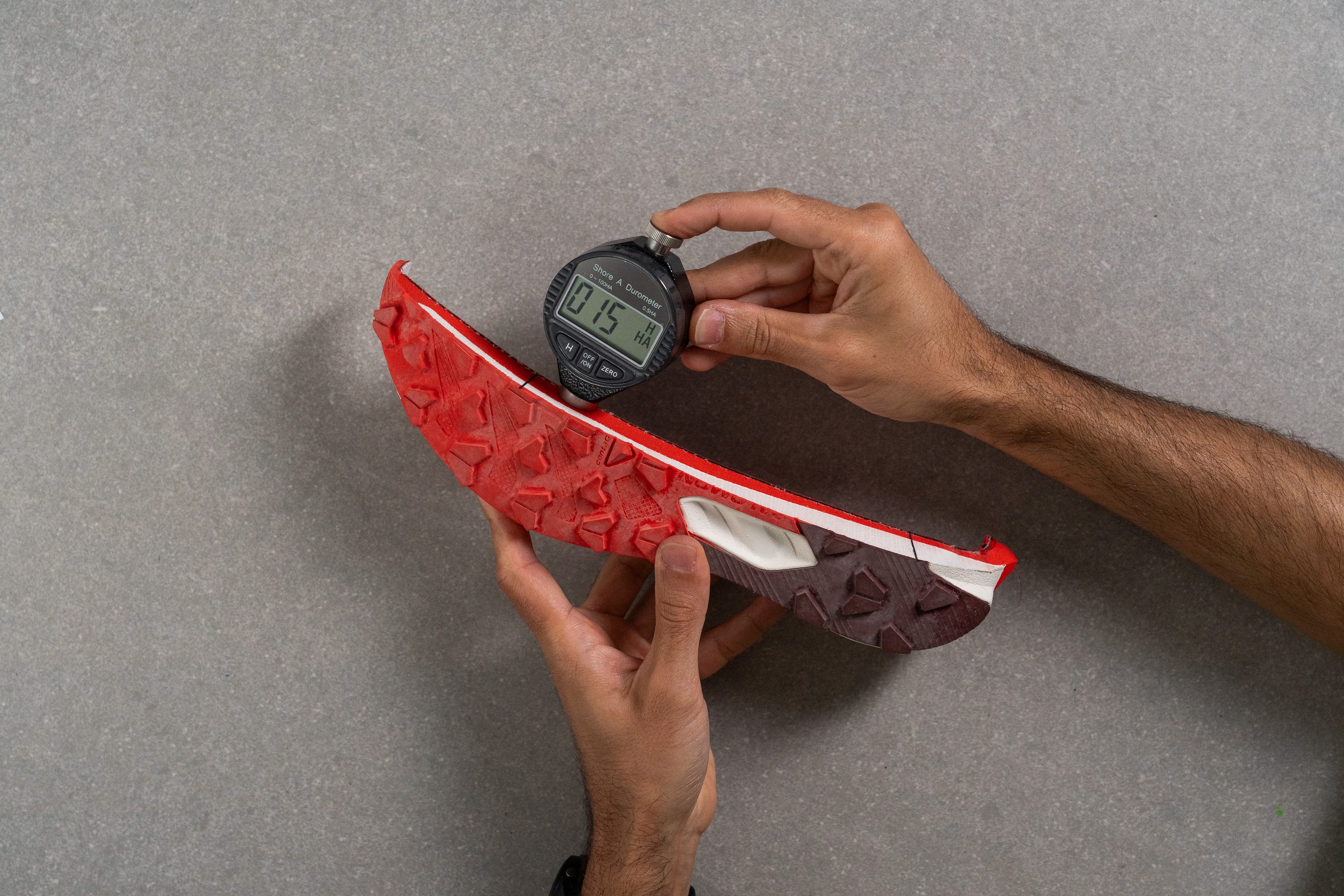
| S/Lab Pulsar 4 | 15.0 HA |
| Media | 25.5 HA |
Rocker
With the added stack height in the Pulsar 4, Salomon introduced a still moderate, but noticeably more pronounced forefoot rocker to maintain a smooth, forward-rolling transition. This helps offset the taller midsole.
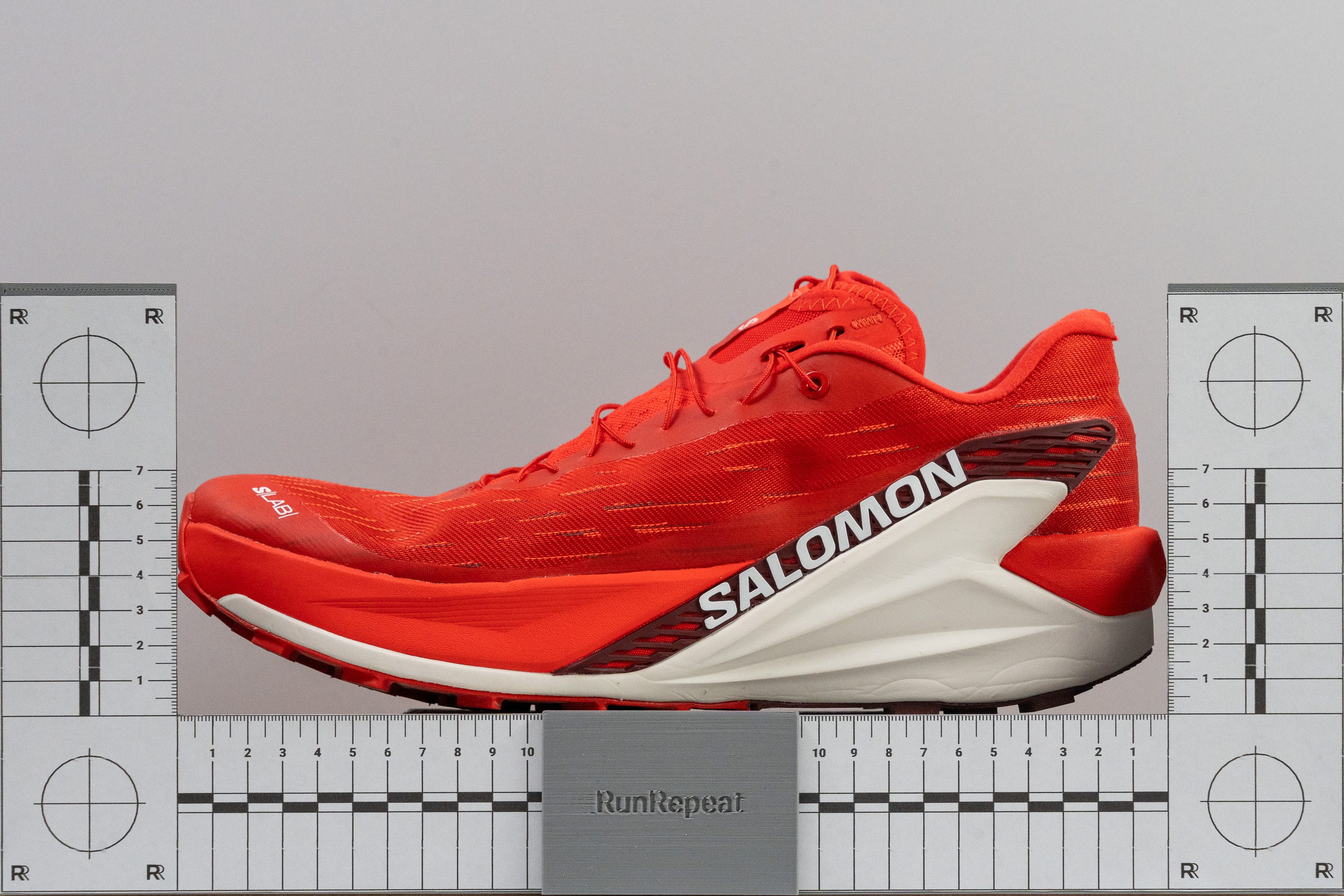
Tallaje y ajuste
Talla
Anchura / Ajuste
Every time we buy a Salomon S/Lab shoe for lab testing, we know to expect surprises in the fit. Unlike most brands that stick to consistent shapes, Salomon often swings between ultra-narrow builds and more average-width options.
This time, with a 94.9 mm width, we discovered a shoe offering a more universal fit that accommodates a wider range of foot shapes. And honestly, it caught us off guard because our previous test was the super-narrow S/Lab Ultra!
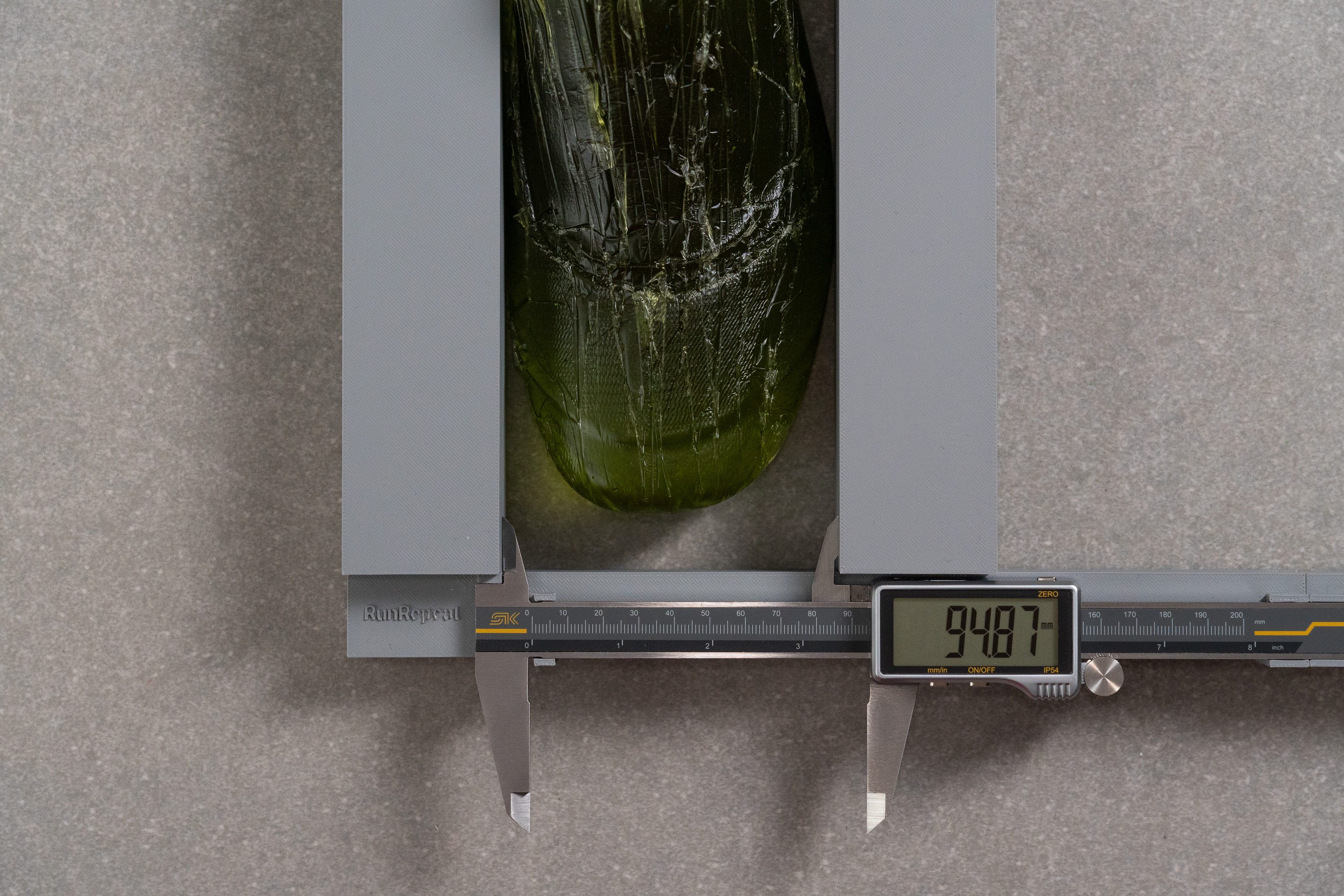
| S/Lab Pulsar 4 | 94.9 mm |
| Media | 95.6 mm |
Anchura de la parte delantera
Our second measurement in the toebox confirmed a similar trend, showing a near-average width of 74.0 mm. It’s not ideal for ultra-wide feet, but for most runners, the Pulsar 4 should feel perfectly comfortable and accommodating.
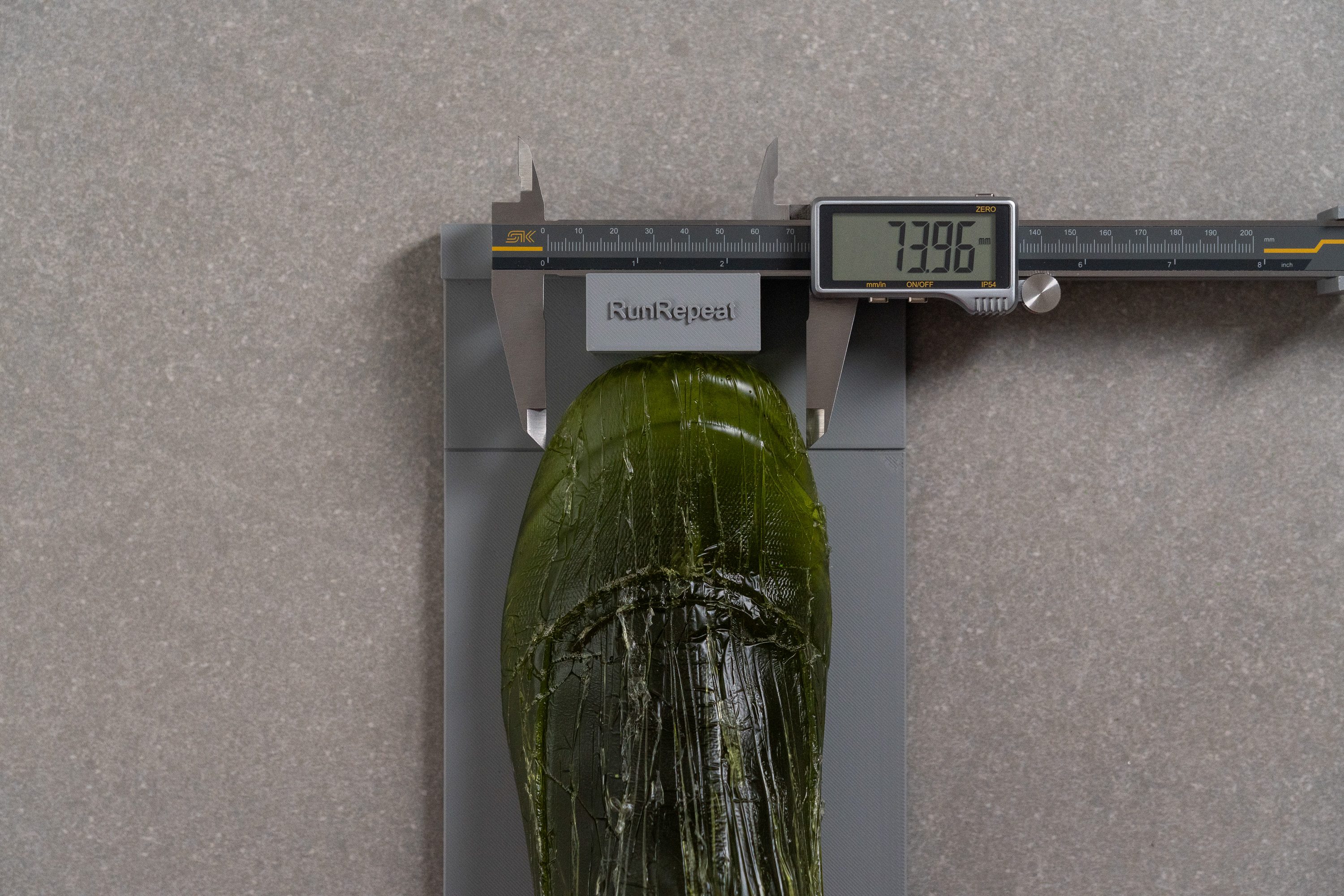
| S/Lab Pulsar 4 | 74.0 mm |
| Media | 74.6 mm |
Altura de la parte delantera
We were pleasantly surprised by the generous vertical space in the toebox.
Unlike many other S/Lab models that restrict vertical toe movement, this one offers 31.0 mm of height. That's plenty of room for your toes to move!
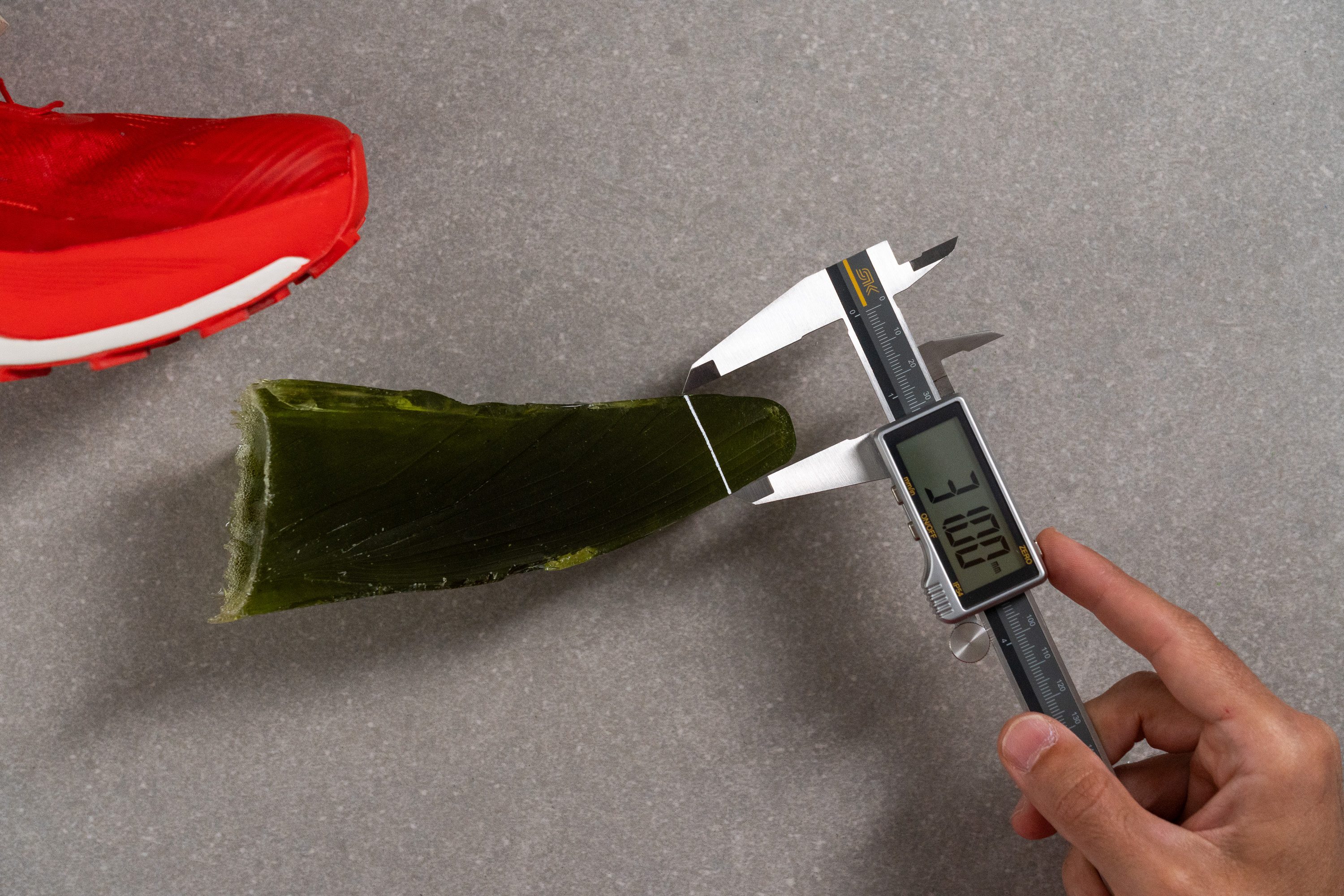
| S/Lab Pulsar 4 | 31.0 mm |
| Media | 27.0 mm |
Tracción / Agarre
Tracción en el antepié
The S/Lab Pulsar 4 returned a 0.55 traction score in our test, giving it enough grip for the mellow terrain it’s built for. A touch more bite would be nice, but there’s nothing major to complain about here.
| S/Lab Pulsar 4 | 0.55 |
| Media | 0.60 |
Profundidad del dibujo de la suela
Another notable change from the Pulsar 3 is the reduced lug depth with just 3.0 mm. This update improves the feel on light, compact terrain but sacrifices grip on softer ground like grass or mud. There’s no perfect lug depth for everyone, and this design decision will likely divide opinions.
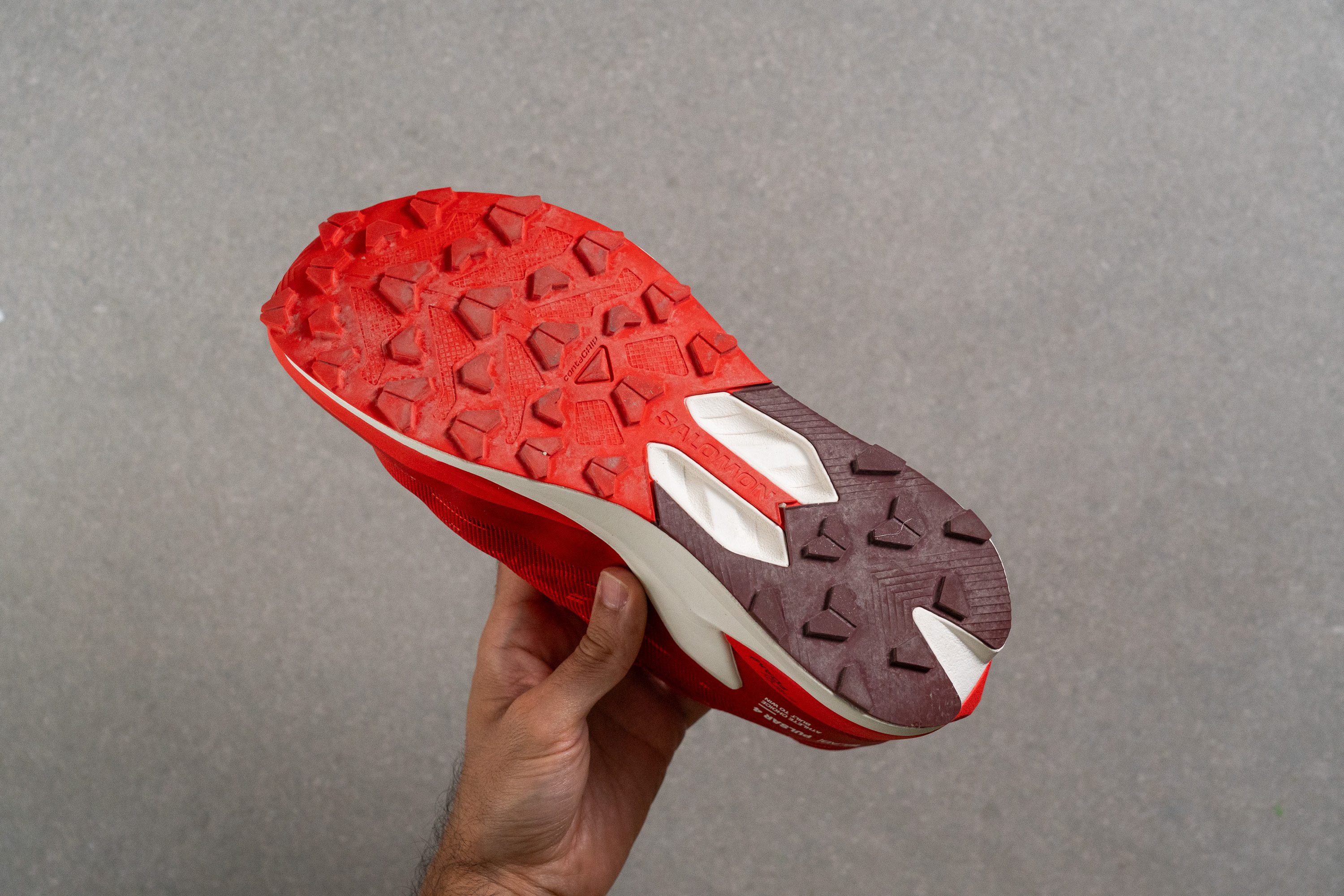
The lug design also evolves from the Pulsar 3, featuring smaller lugs while retaining the signature arrow shape and multi-directional pattern for smoother cornering. The slightly wider platform allows for more lug rows and improved spacing in the heel, which is nice.
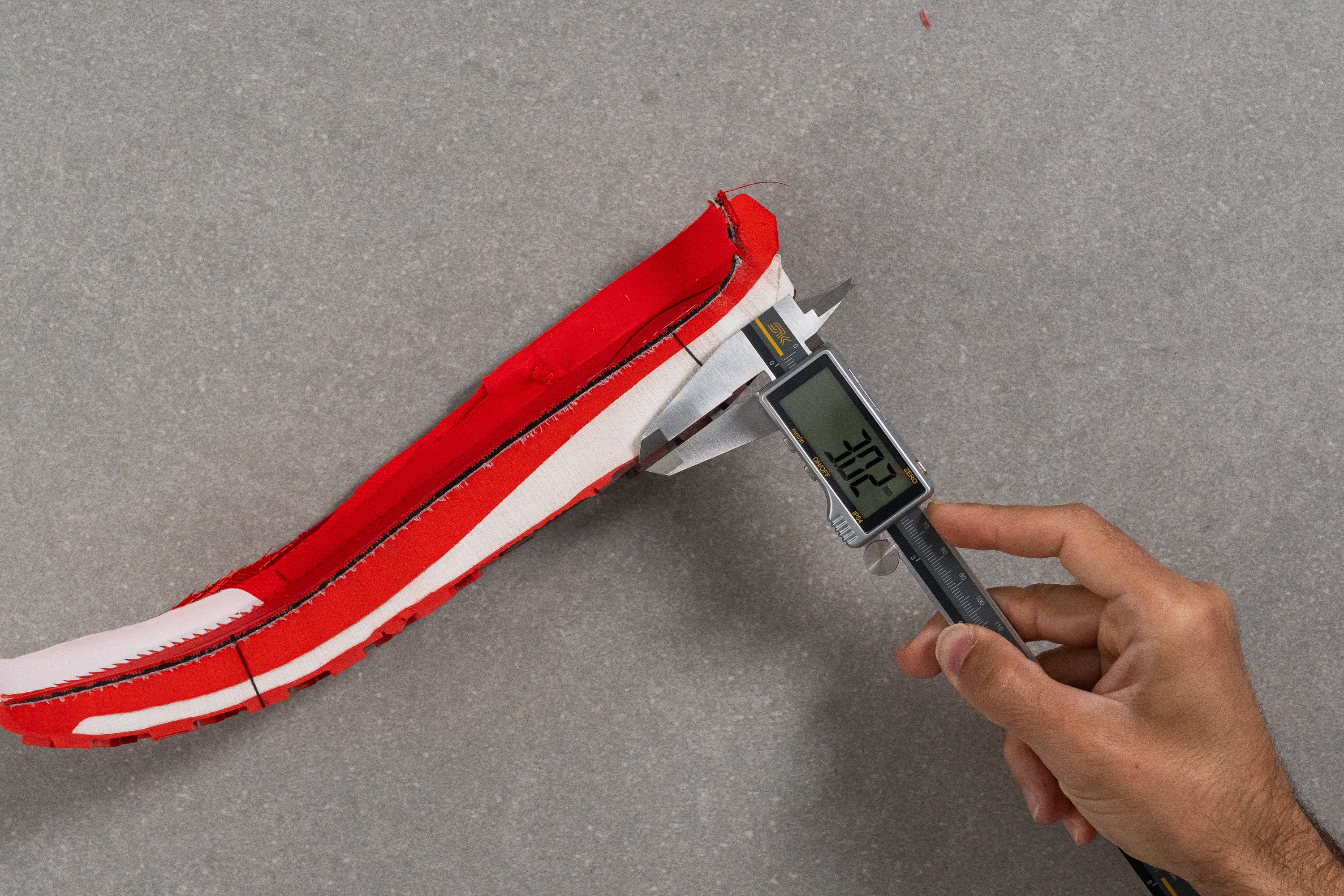
| S/Lab Pulsar 4 | 3.0 mm |
| Media | 3.5 mm |
Diseño de la suela exterior
The Contagrip outsole of the Pulsar 4 includes a big midfoot gap, likely aimed at reducing weight—though it comes at the cost of some grip and protection on rocky or uneven terrain where full rubber coverage would perform better.
It’s also evident from the outsole design that Salomon designed this version for dry, compact trails, making it ideal for fast summer races.
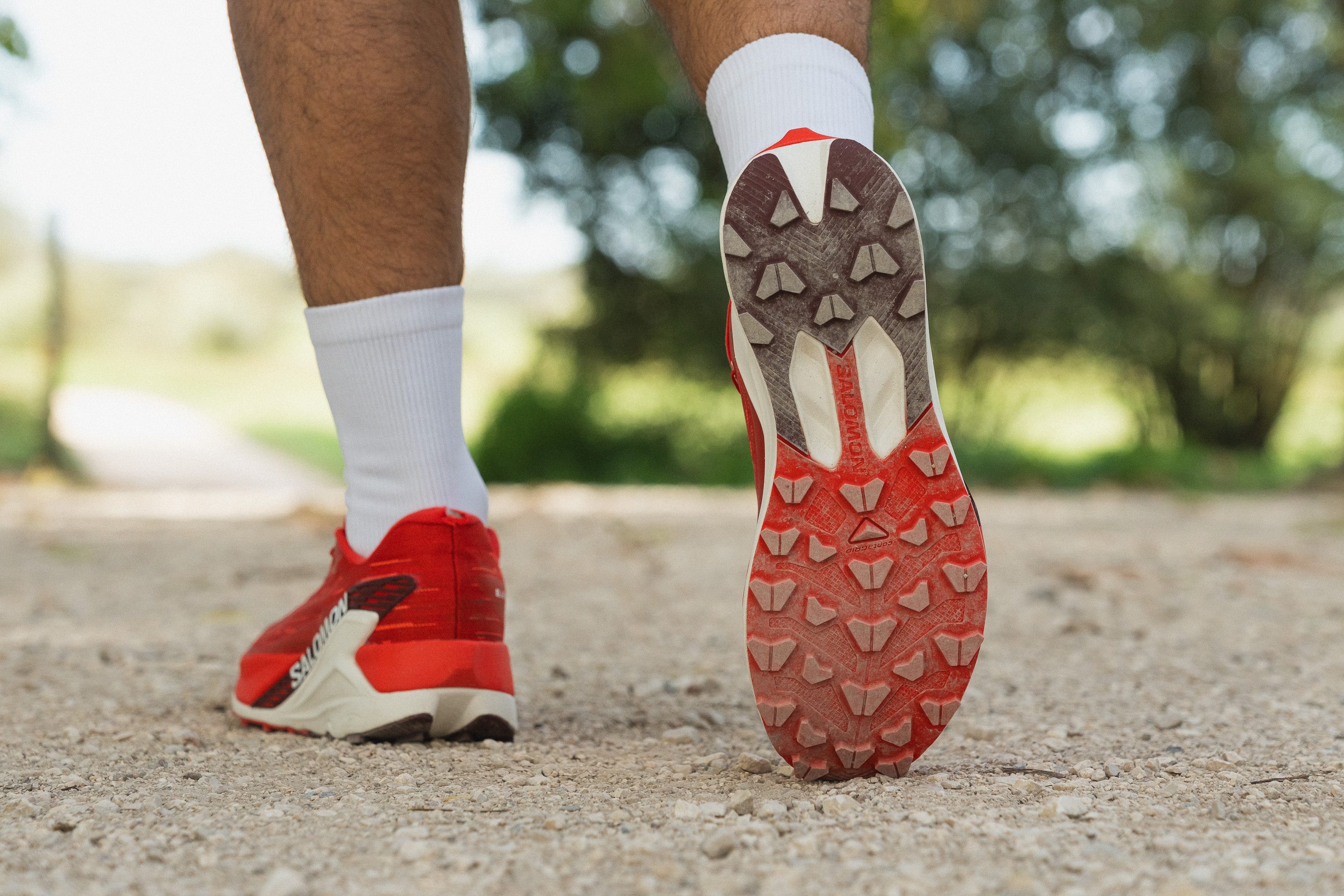
Flexibilidad / Rigidez
One interesting aspect of the Pulsar series is that Salomon continues to skip a carbon plate, resulting in a noticeably more flexible feel compared to many rivals. In our lab, it measured 12.7N in our bending test.
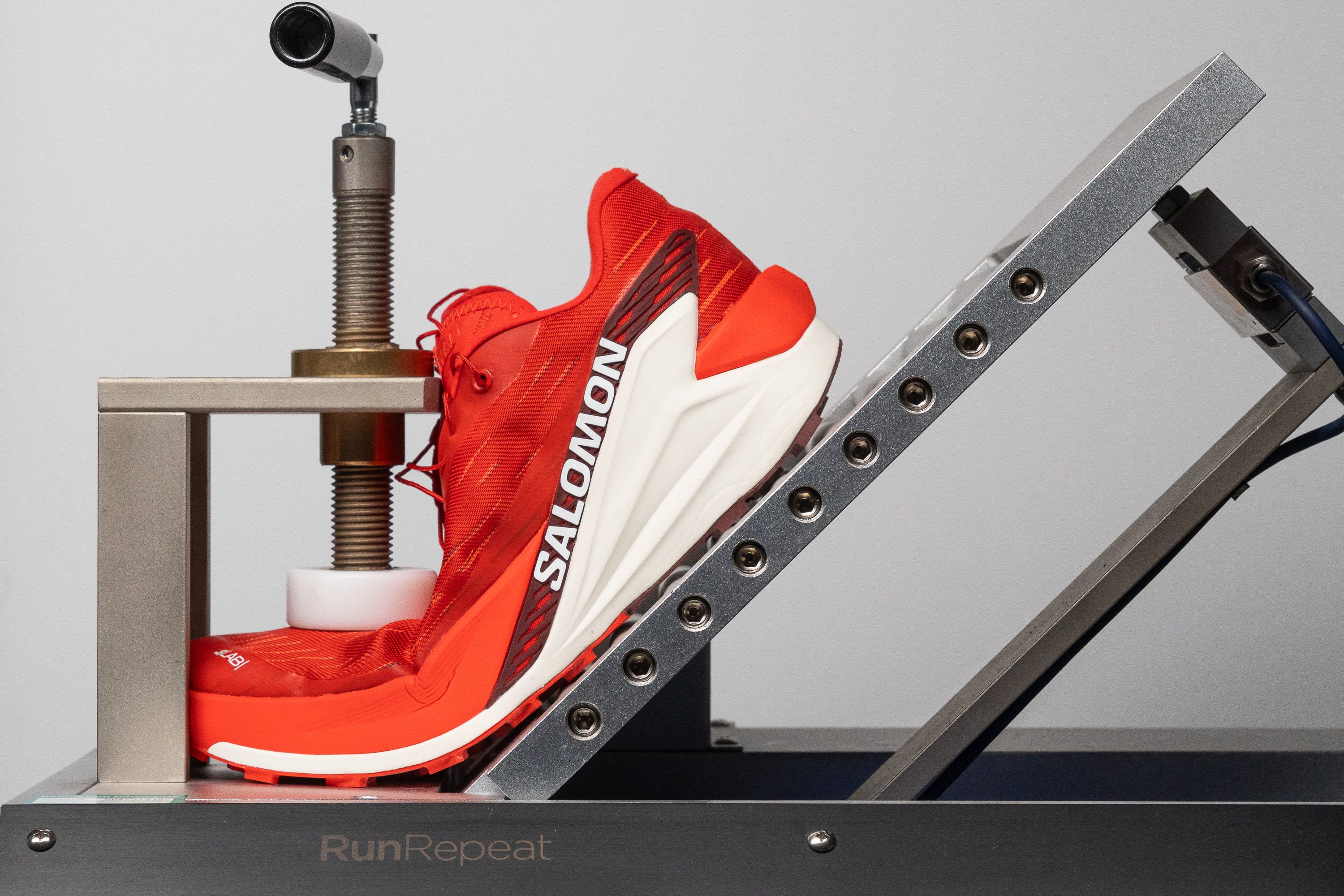
| S/Lab Pulsar 4 | 12.7N |
| Media | 14.6N |
Peso
If you dislike the change in stack height, this next finding won’t cheer you up either.
While still lightweight overall, the Pulsar 4 tips the scale at 8.7 oz (247g)—significantly heavier than its predecessors. For reference, the Pulsar 2 weighed 6.3 oz (180g) and the Pulsar 3 7.25 oz (205g). Still, it remains light by trail standards.

| S/Lab Pulsar 4 | 8.7 oz (247g) |
| Media | 10.2 oz (289g) |
Transpirabilidad
The Pulsar 4 continues Salomon’s all-French collaboration with Chamatex Group, once again featuring the high-quality MATRYX upper.
That said, this version differs from previous S/Lab models. We found that Salomon opted for a denser weave that limits airflow, earning just 2/5 in our breathability test.
The design itself still follows the usual S/Lab formula, featuring a thinner toebox and a more structured construction throughout the midfoot and heel. Yet this time, the upper isn’t as thin or airy as expected, a fact we confirmed using our smoke machine during lab testing.

When examined under our digital microscope, the MATRYX fabric revealed almost no open space between yarns, looking remarkably similar to a Gore-Tex upper.
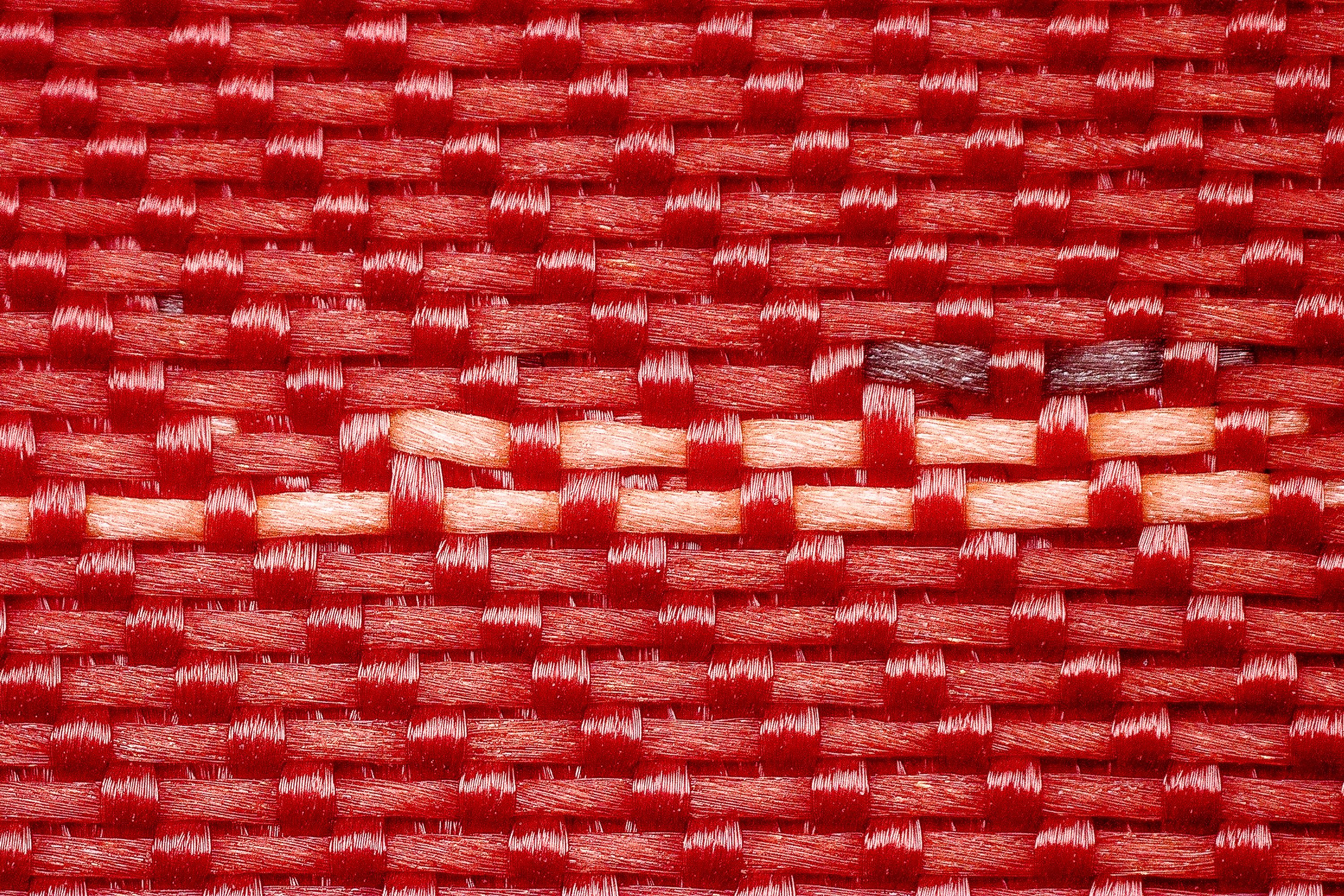
This tightly woven pattern blocks most airflow and contributes to the shoe’s low breathability score.
While that might sound like a drawback, it’s not necessarily negative. For runners who don’t plan to use the Pulsar 4 on hot days, this denser build is a plus, it traps heat better and adds durability, solving one of the key weaknesses seen in other models like the S/Lab Genesis.
| S/Lab Pulsar 4 | 2 |
| Media | 3.2 |
Estabilidad
Prueba de estabilidad lateral
The Pulsar 4 features a distinctive midsole design with its Active Chassis system, featuring two large white sidewalls that rise from the arch towards the heel and cradle the foot securely.
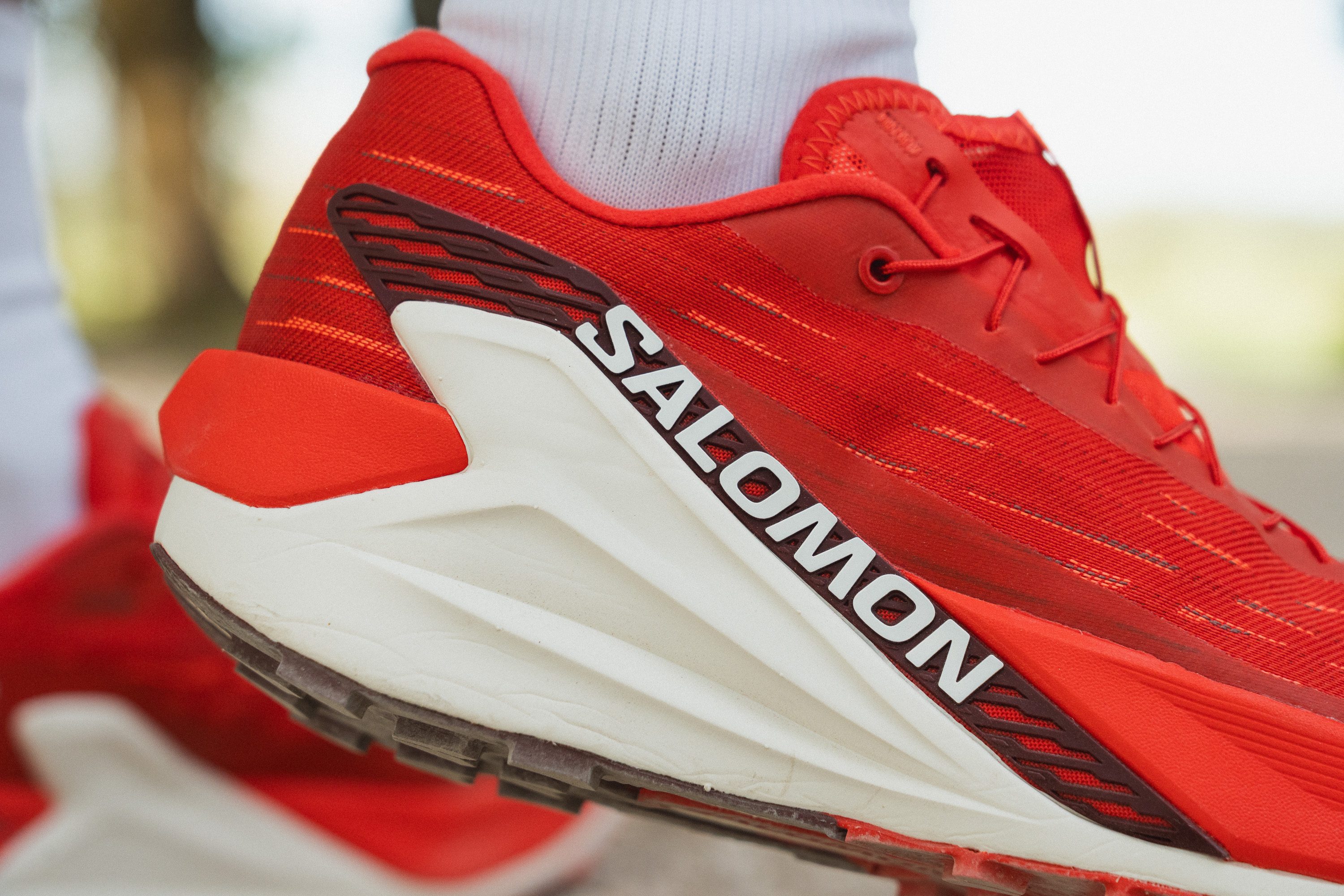
What’s interesting about this shoe is that Salomon clearly understood that simply widening the platform wouldn’t work here. That approach would have compromised the Pulsar’s agile, nimble DNA, so they devised a smarter solution instead.
Rigidez torsional
Even without a carbon plate in the midsole, the Pulsar 4 shows a rigid structure, earning a 4/5 in our test.
| S/Lab Pulsar 4 | 4 |
| Media | 3.6 |
Rigidez del contrafuerte del talón
The heel counter adds extra stability with a 3/5 rating, slightly firmer than other S/Lab models that favor a more minimal design. Thankfully, Salomon balanced this by adding extra foam for comfort, and we really appreciated it.
| S/Lab Pulsar 4 | 3 |
| Media | 3 |
Anchura de la mediasuela - antepié
We mentioned earlier the agile DNA of this shoe, and here’s the proof. The forefoot measures just 106.0 mm wide, noticeably narrower than the average trail shoe, highlighting its design for quick, sharp turns.
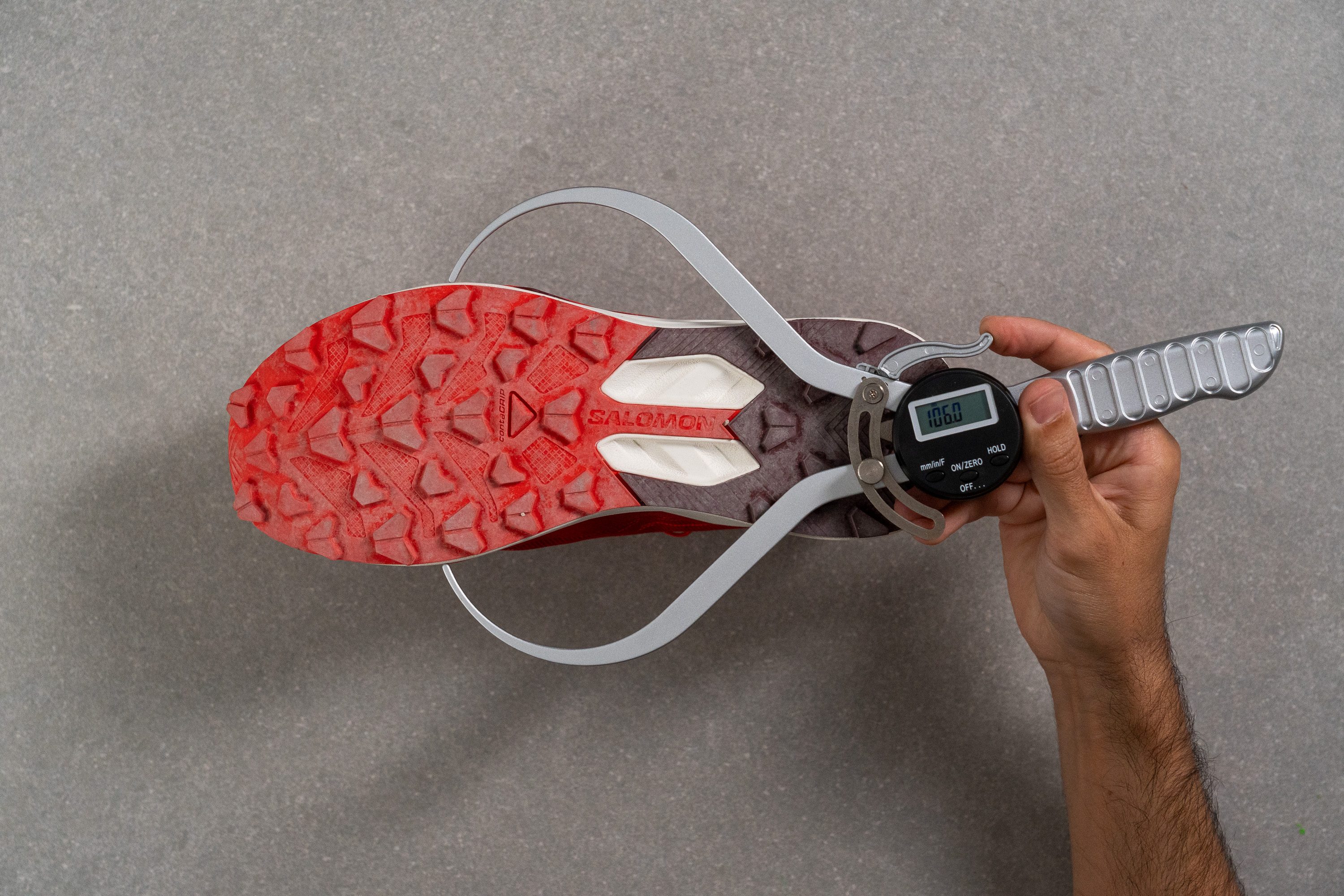
| S/Lab Pulsar 4 | 106.0 mm |
| Media | 112.8 mm |
Anchura de la mediasuela - talón
The heel is slightly wider than its predecessor’s but still remains on the narrow side compared to most running shoes. Measuring just 84.1 mm, it might seem compact, yet the Active Chassis design effectively compensates with remarkable stability and control.
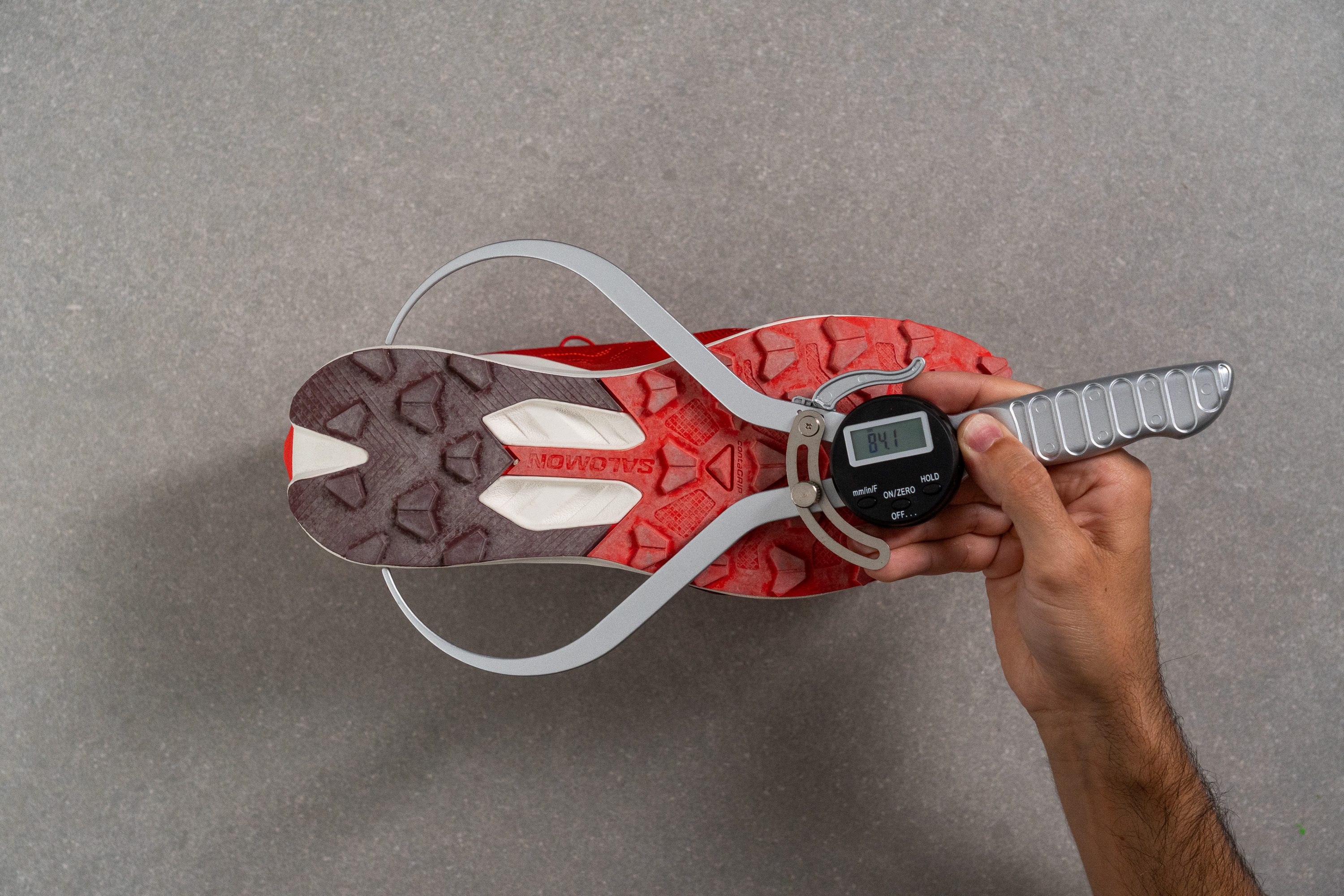
| S/Lab Pulsar 4 | 84.1 mm |
| Media | 89.8 mm |
Durabilidad
Durabilidad de la parte delantera
The choice to use a denser MATRYX fabric on the Pulsar 4 was a good one if durability worries you. While previous S/Lab models scored poorly in this area, the Pulsar 4 passed our durability test with a solid 3/5 rating.
| S/Lab Pulsar 4 | 3 |
| Media | 3.1 |
Durabilidad del acolchado del talón
The heel padding performed impressively, earning a strong 4/5 rating. This is a result that confidently eliminates any concerns about early wear or durability issues.
| S/Lab Pulsar 4 | 4 |
| Media | 3 |
Durabilidad de la suela
We also tested the durability of the Contagrip rubber and found it quite satisfying, with only 0.9 mm of material worn off the lugs. While not an outstanding result, it still ensures good longevity and no hints of early wear compared to most shoes.
| S/Lab Pulsar 4 | 0.9 mm |
| Media | 0.9 mm |
Grosor de la suela
Salomon made a smart move by adding slightly more rubber than in other S/Lab models, reaching 1.9 mm. Since this shoe lacks both a rock plate and a full-length carbon plate, the extra layer provides much-needed protection underfoot.
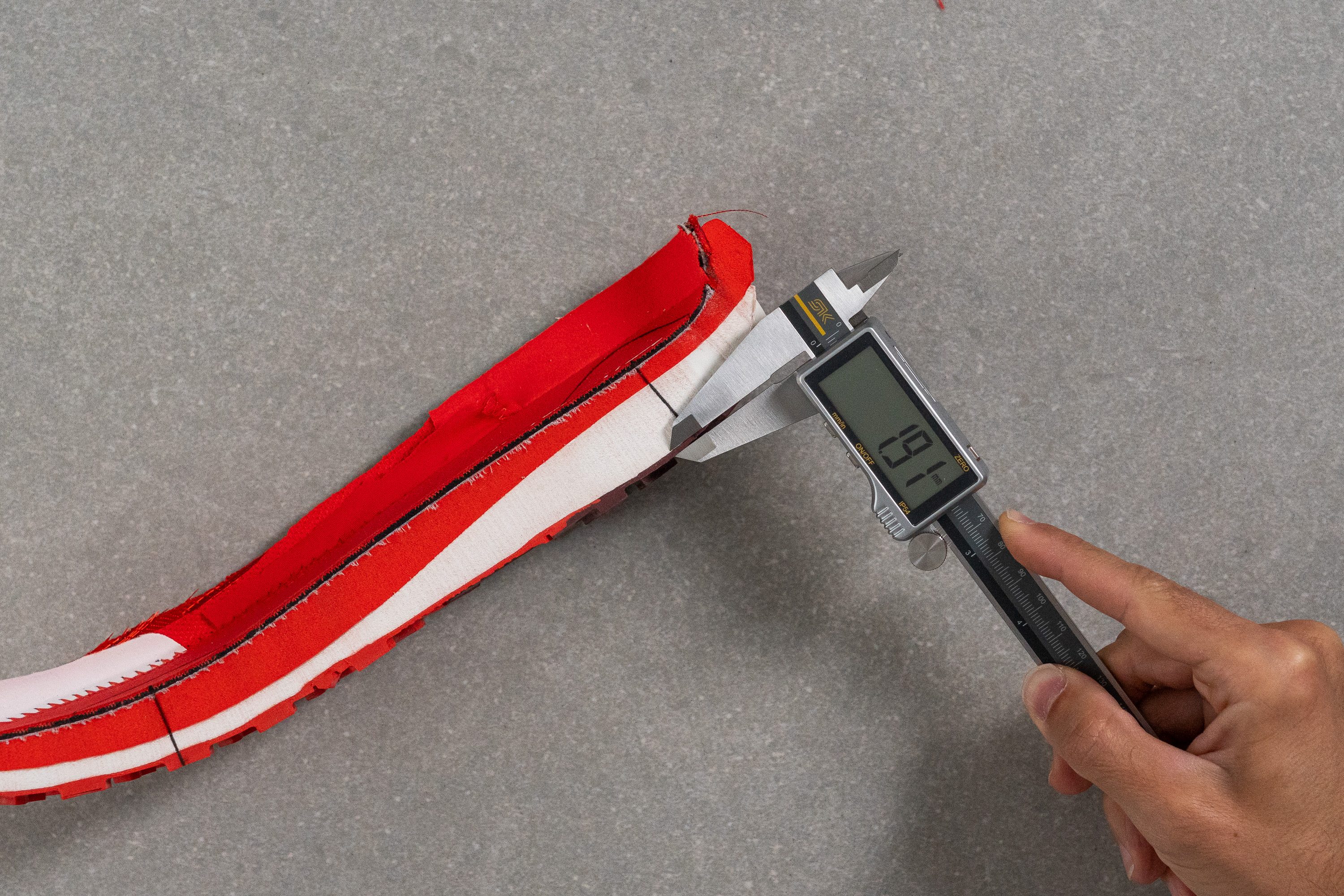
| S/Lab Pulsar 4 | 1.9 mm |
| Media | 2.2 mm |
Varios
Grosor de la plantilla
The non-removable insole measures only 2.5 mm thick.
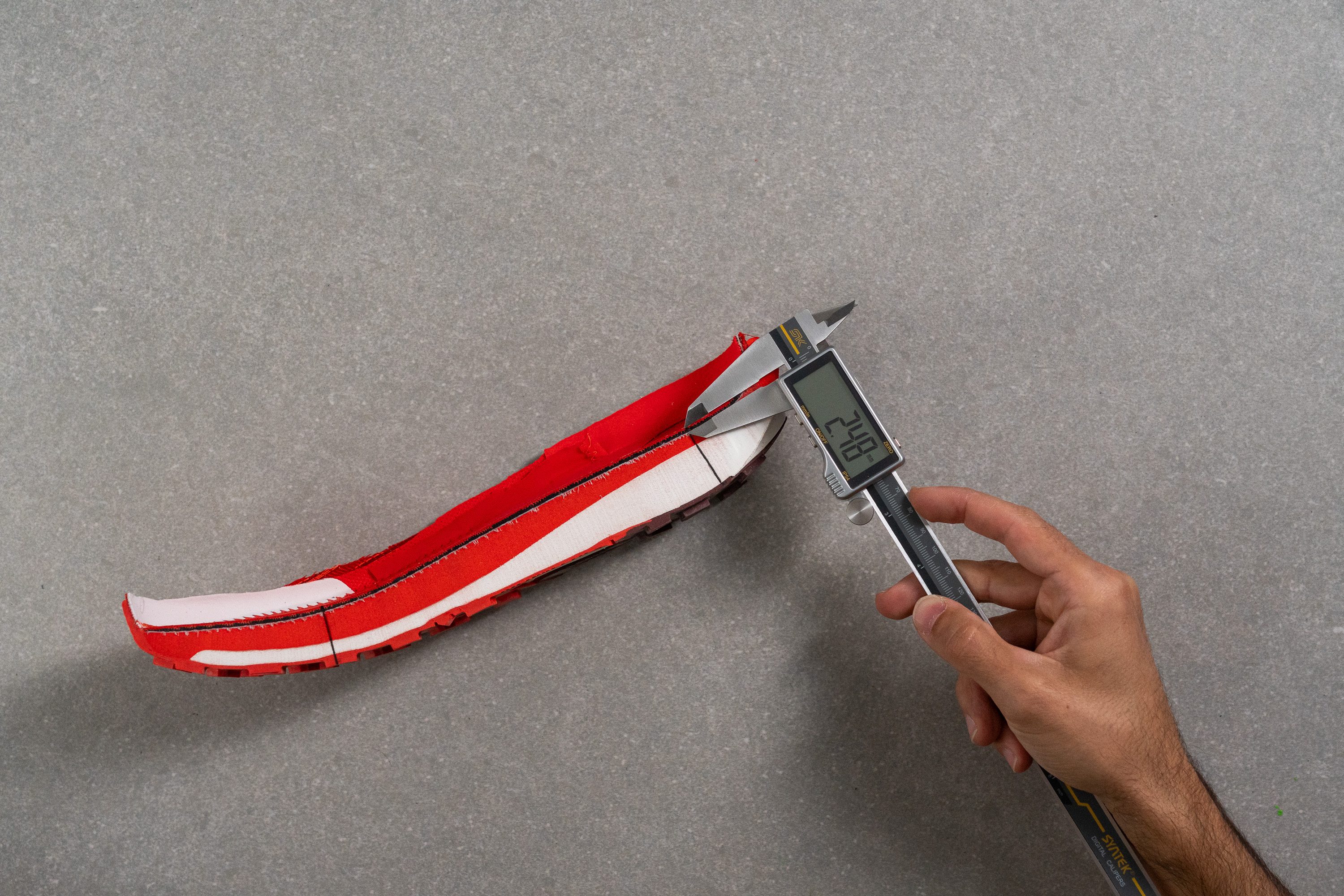
| S/Lab Pulsar 4 | 2.5 mm |
| Media | 4.7 mm |
Plantilla extraíble
One of the rare features of the Pulsar 4 is its non-removable insole. Yes, it's really uncommon these days, though a few models still use this setup, which is why we continue doing this test.
This image also highlights the shoe’s "bathtub" construction, designed to cradle the foot deeply within the midsole. This configuration provides impressive stability and a more secure feel on the trails.
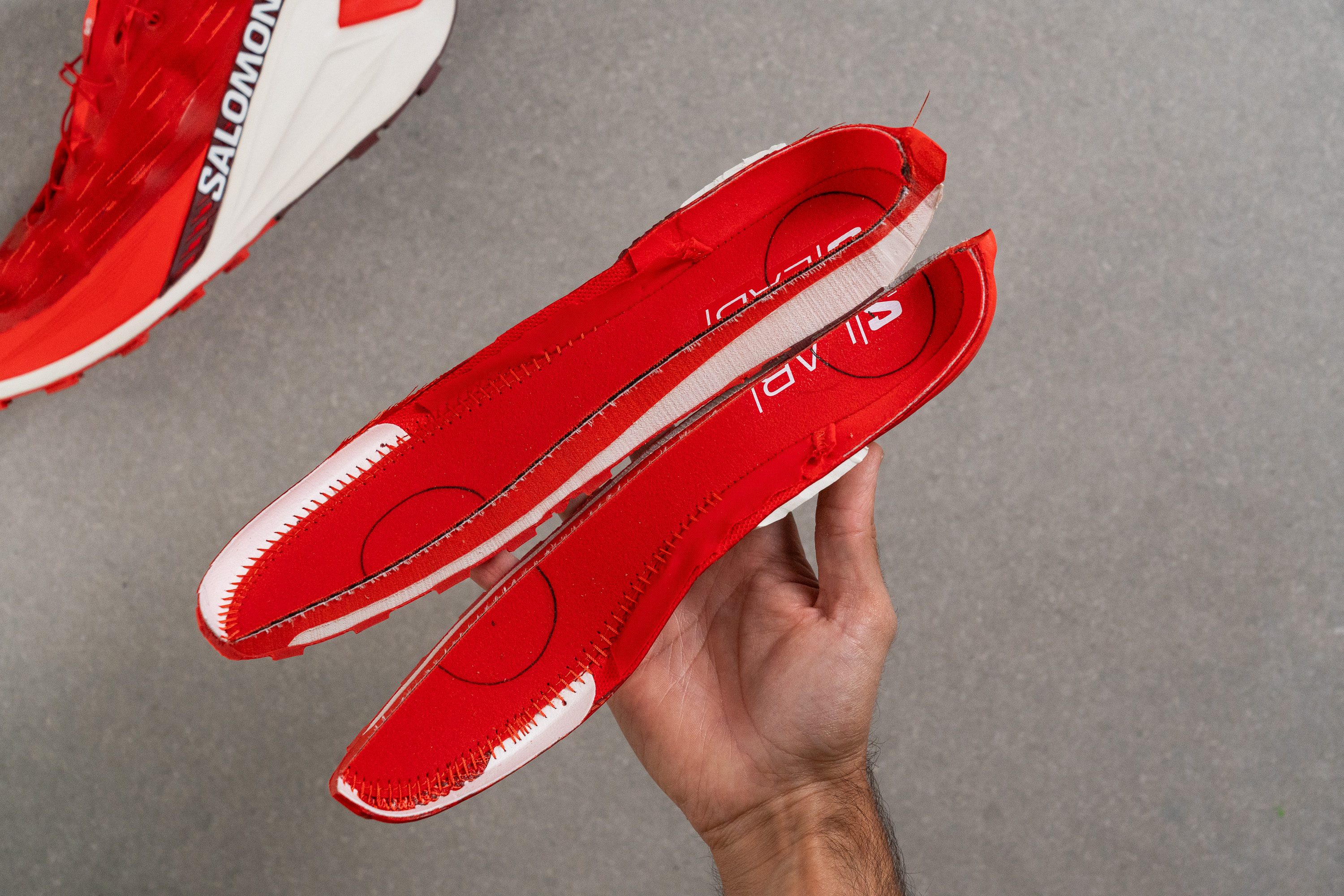
| S/Lab Pulsar 4 | No |
Rigidez de la mediasuela en frío (%)
One major drawback of EVA foams is how much they firm up in cold conditions. Testing the Pulsar 4 in the lab, we measured a 31% decrease in softness after 20 minutes in the freezer.
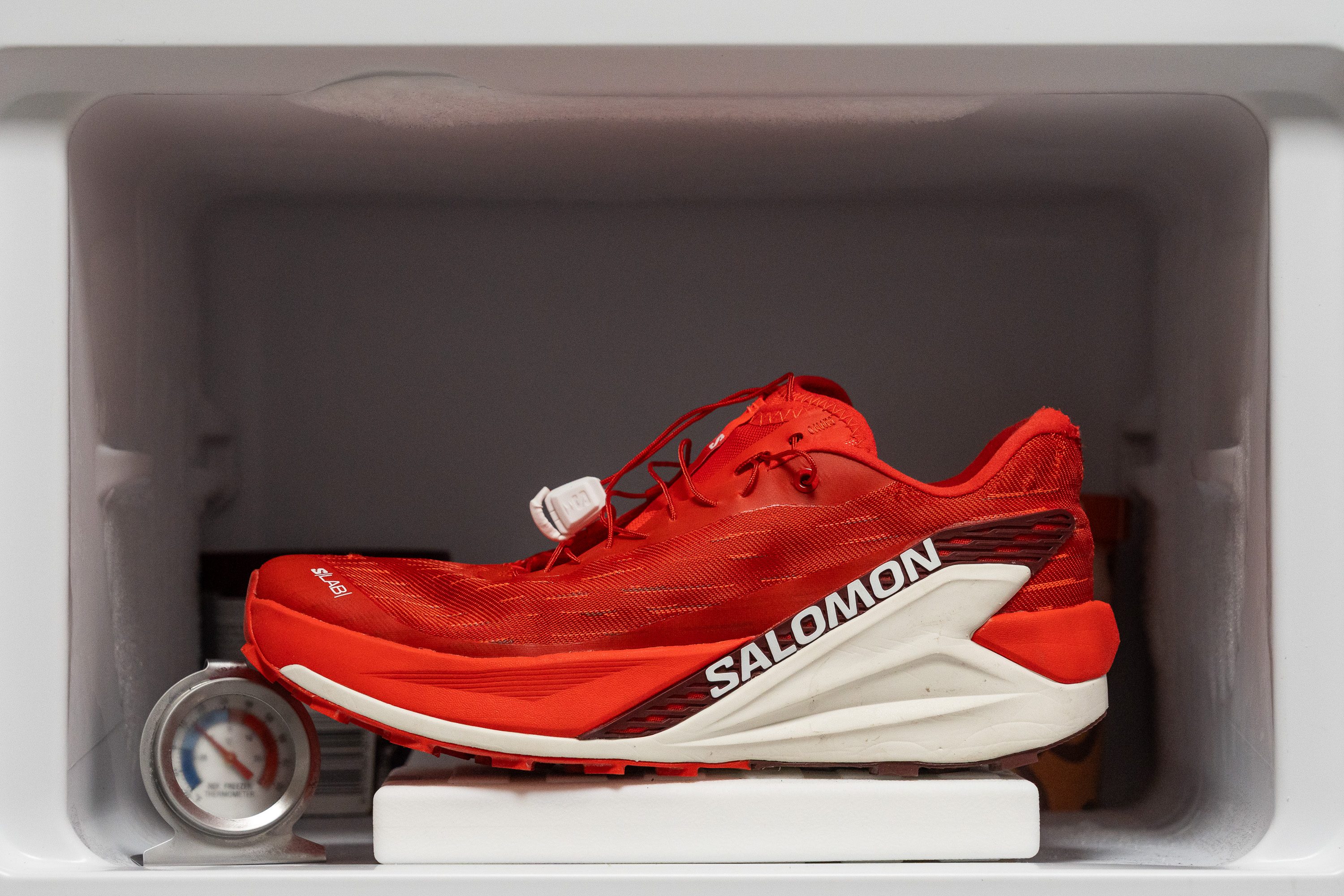
| S/Lab Pulsar 4 | 31% |
| Media | 26% |
Elementos reflectantes
Unfortunately, Salomon missed the opportunity to include reflective elements on the Pulsar 4. And it's something that has become rather common for the brand in recent releases.
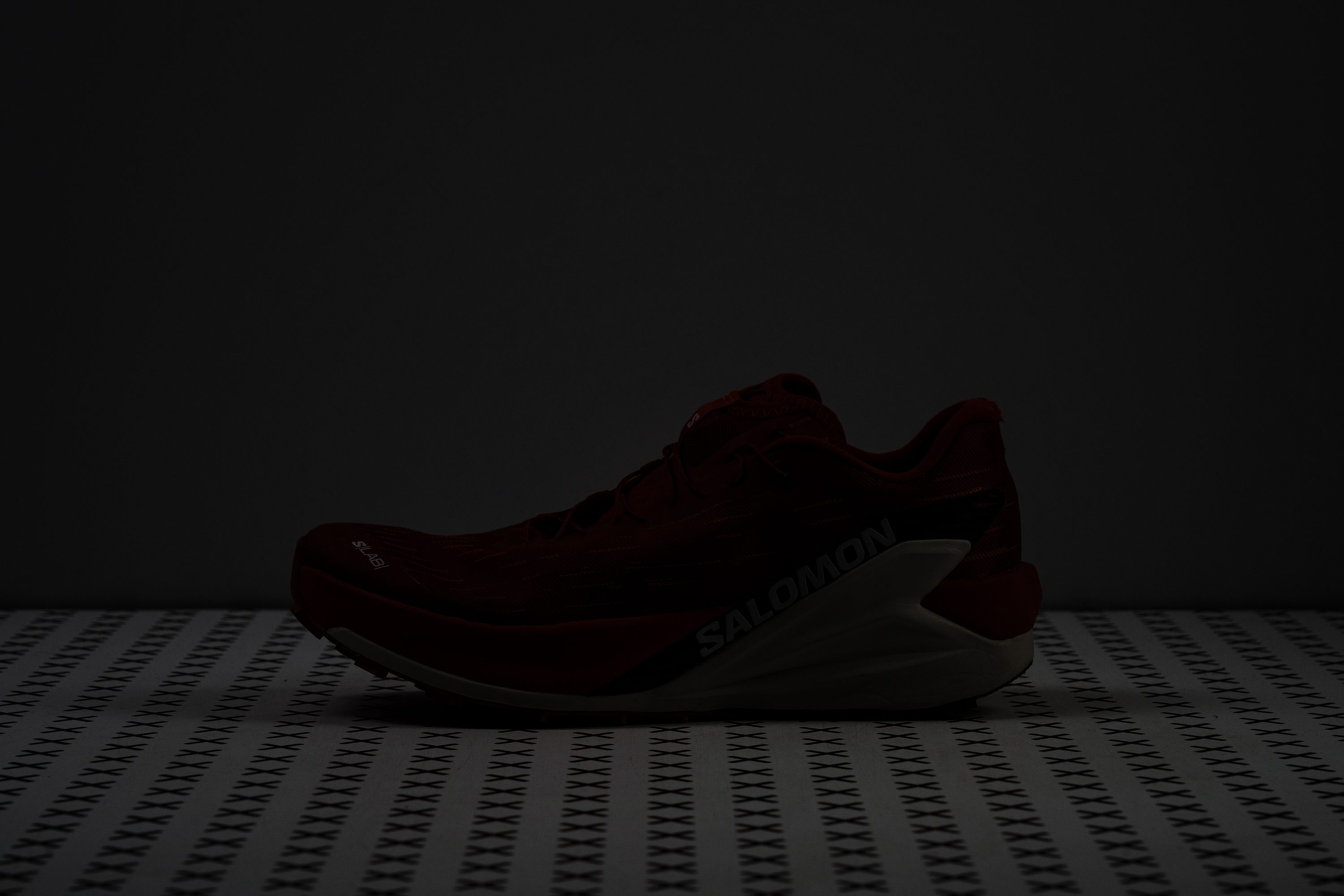
| S/Lab Pulsar 4 | No |
Acolchado de la lengüeta
The tongue of the Pulsar 4 leans more toward racing performance than comfort, offering just 3.7 mm of padding, but we think that’s the right call. It’s actually generous for a competition shoe, and the Quicklace system rarely creates pressure points.
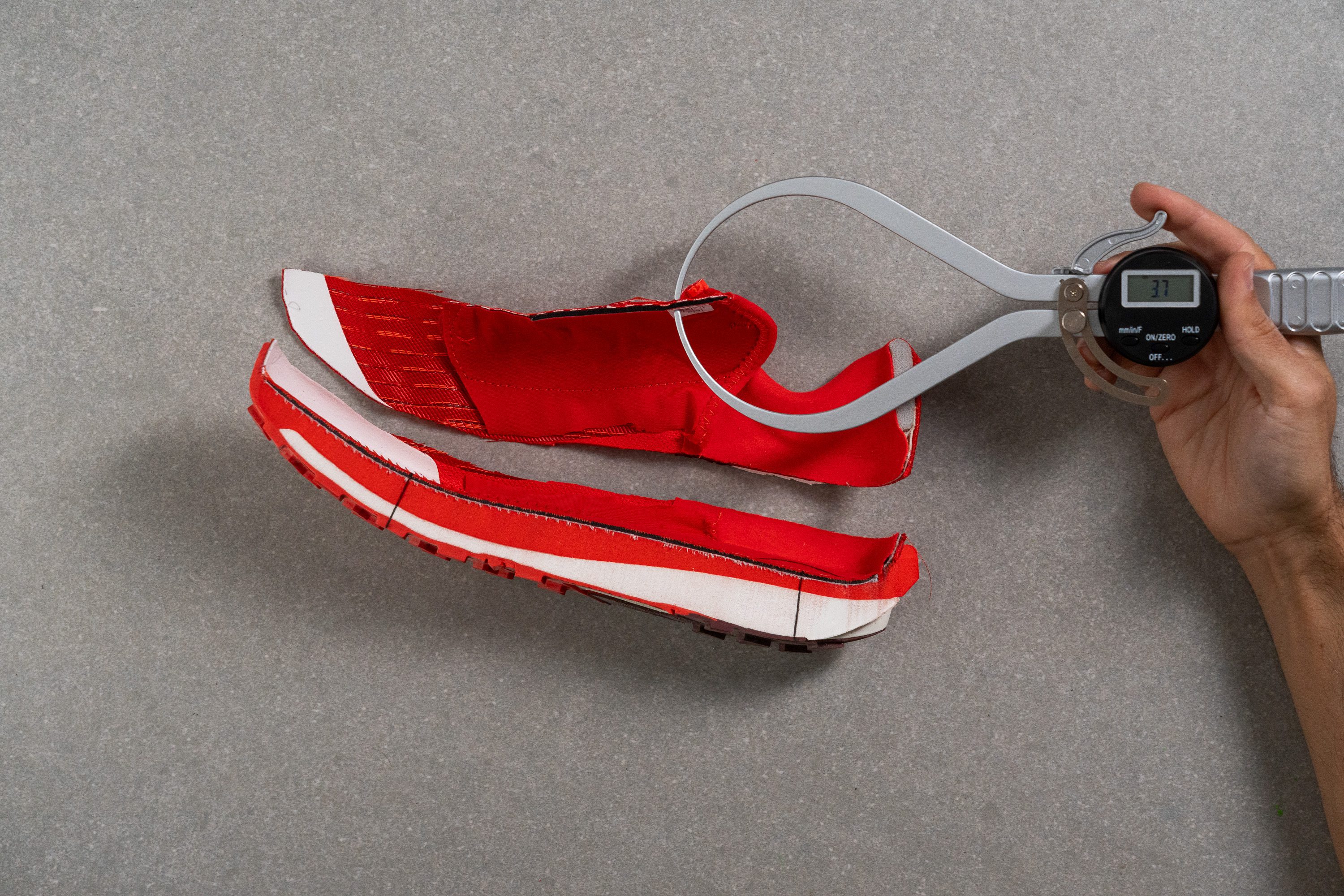
| S/Lab Pulsar 4 | 3.7 mm |
| Media | 6.4 mm |
Lengüeta: tipo de refuerzo
The tongue is fully gusseted, preventing small stones or debris from entering the shoe. It also enhances lockdown, keeping the foot securely in place throughout the run.
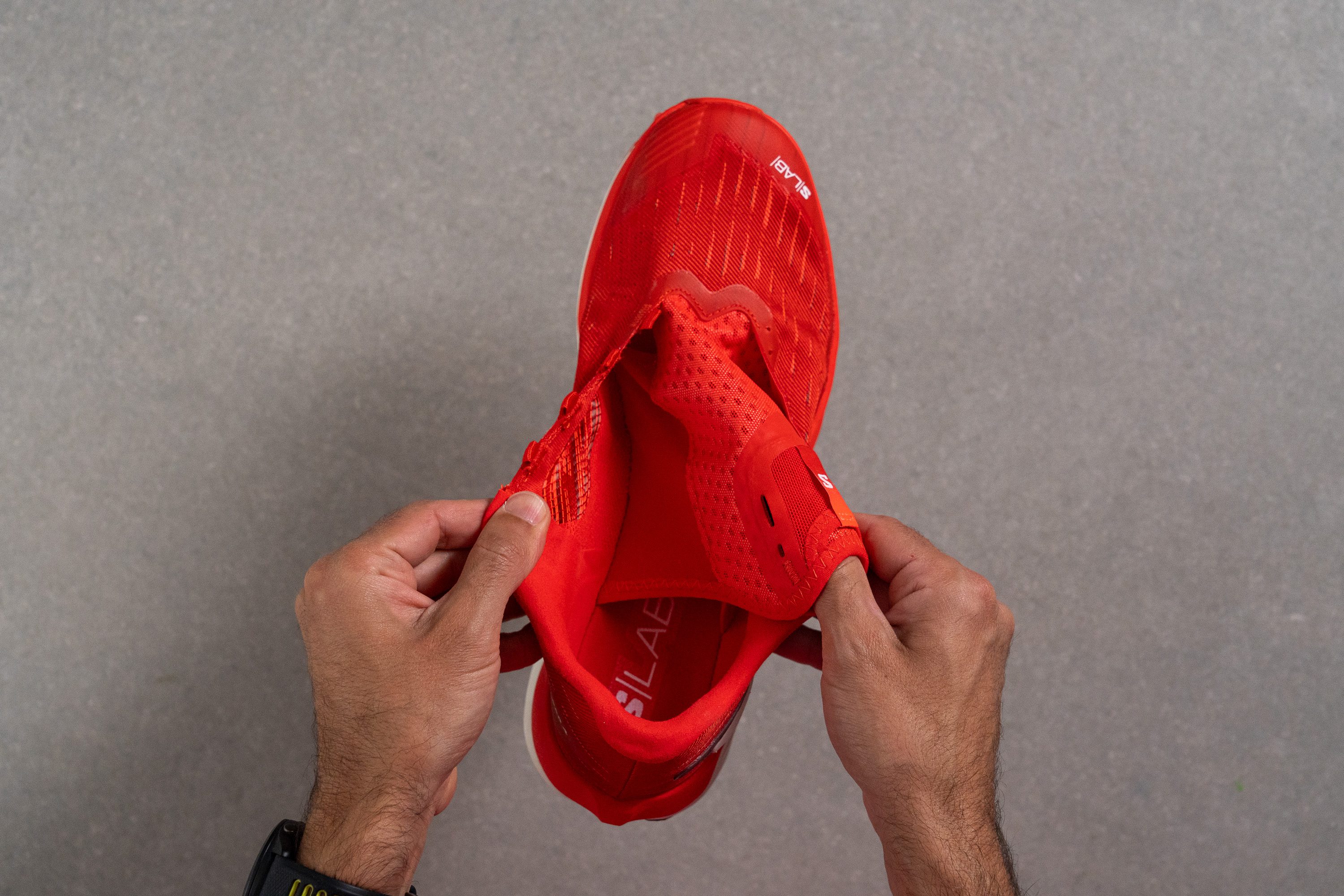
| S/Lab Pulsar 4 | Ambos lados (completo) |
Precio
As with any S/Lab model, the Pulsar 4 comes with a hefty price tag.
And once again, just like in other S/Lab shoes we’ve tested, the upper and outsole deliver solid quality, but the midsole disappoints by offering limited energy return for its cost. If performance is your priority, we think there are better options out there.
| S/Lab Pulsar 4 | $220 |
Tirador del talón
The heel features a minimalist design without a heel tab. And the printed text "ATHLETE CHOICE - BUILT TO WIN" definitely emphasizes Salomon’s performance focus and the shoe’s S/Lab origin, crafted with direct input from elite trail runners.
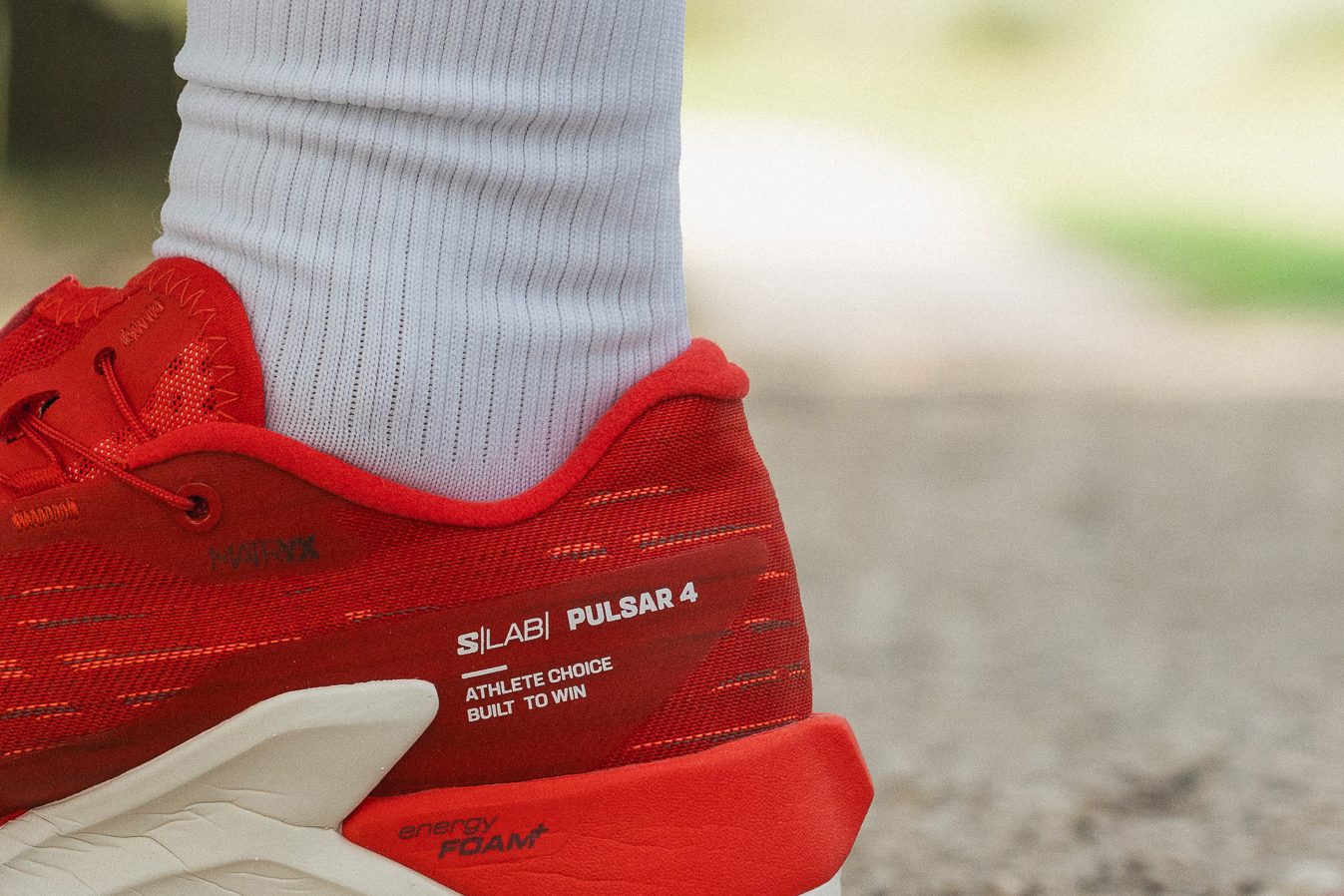
| S/Lab Pulsar 4 | Ninguno |
Quicklace
If you’ve used other Salomon models with the Quicklace system, we found that this one performs just as well. It’s quick to adjust and stays unobtrusive while running.
However, it carries the usual Quicklace drawback—fine-tuning pressure over the instep is tricky, which can bother some trail runners.

